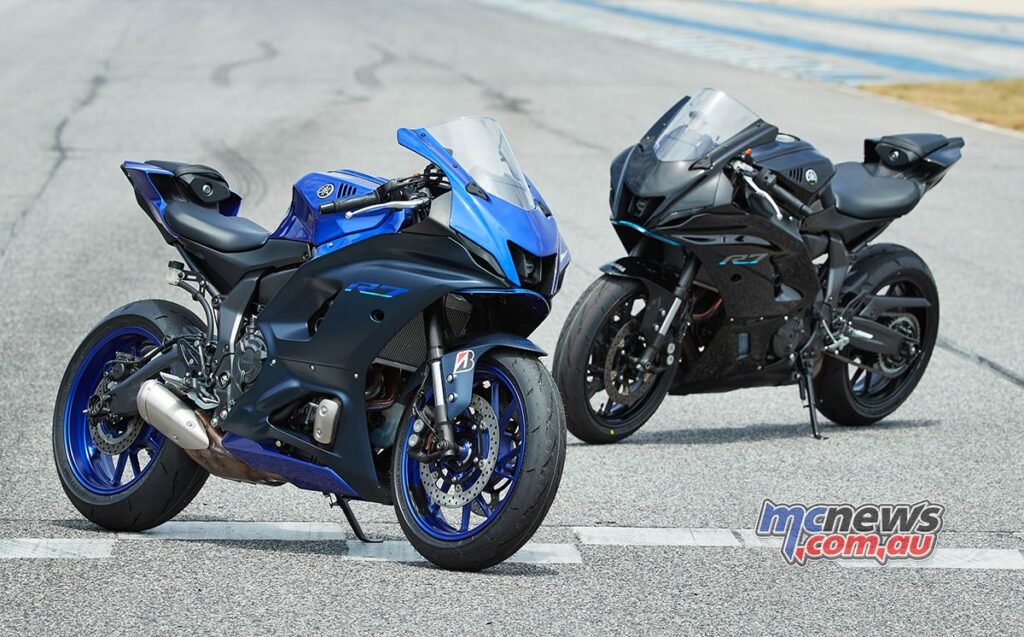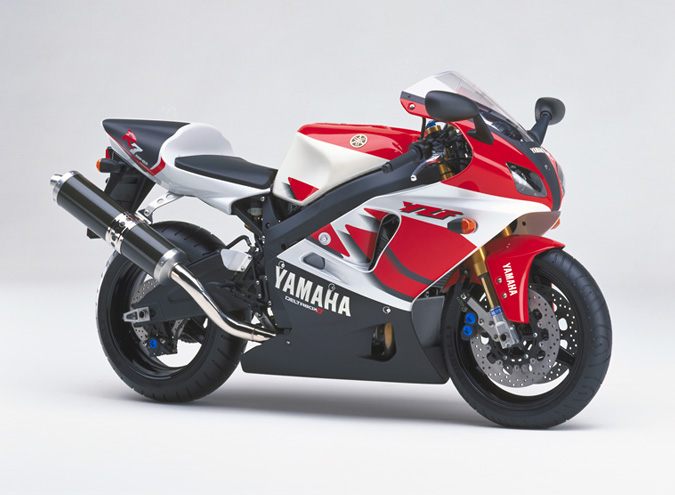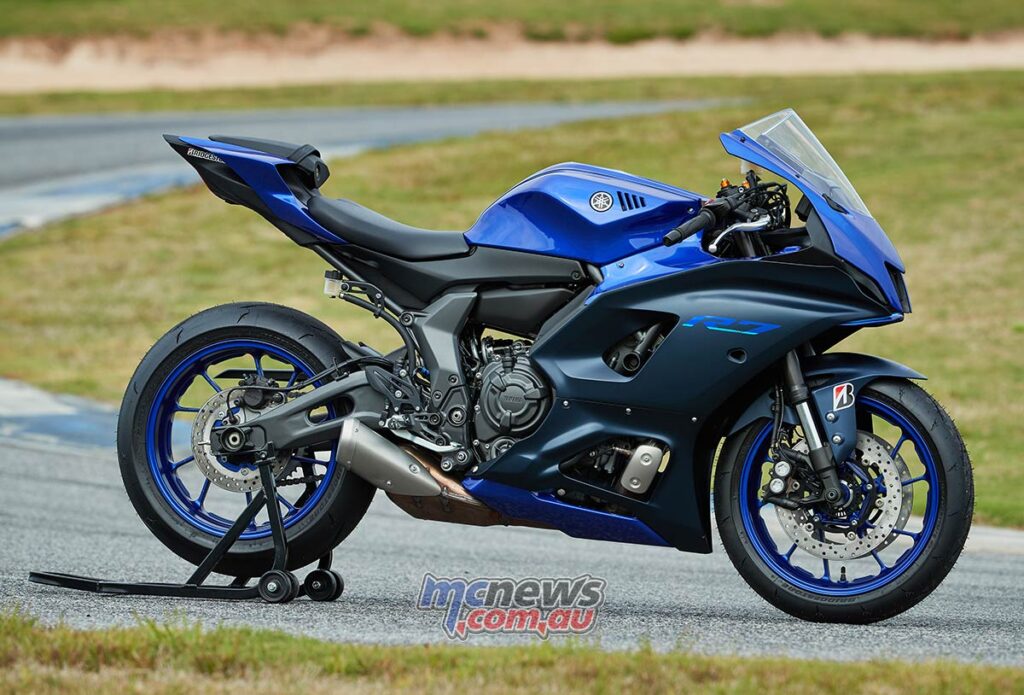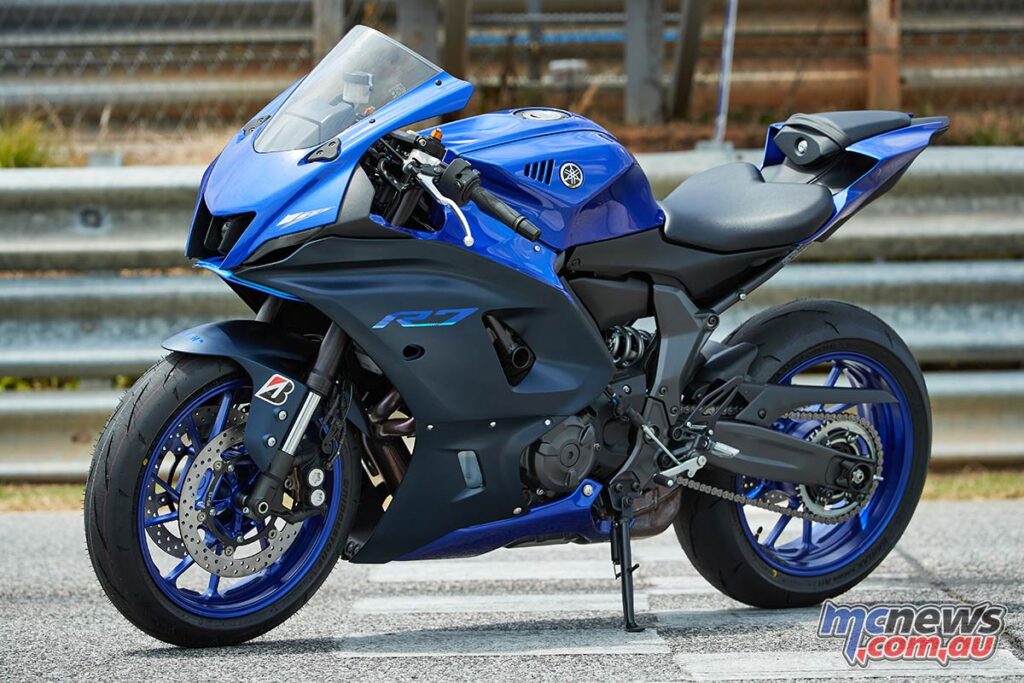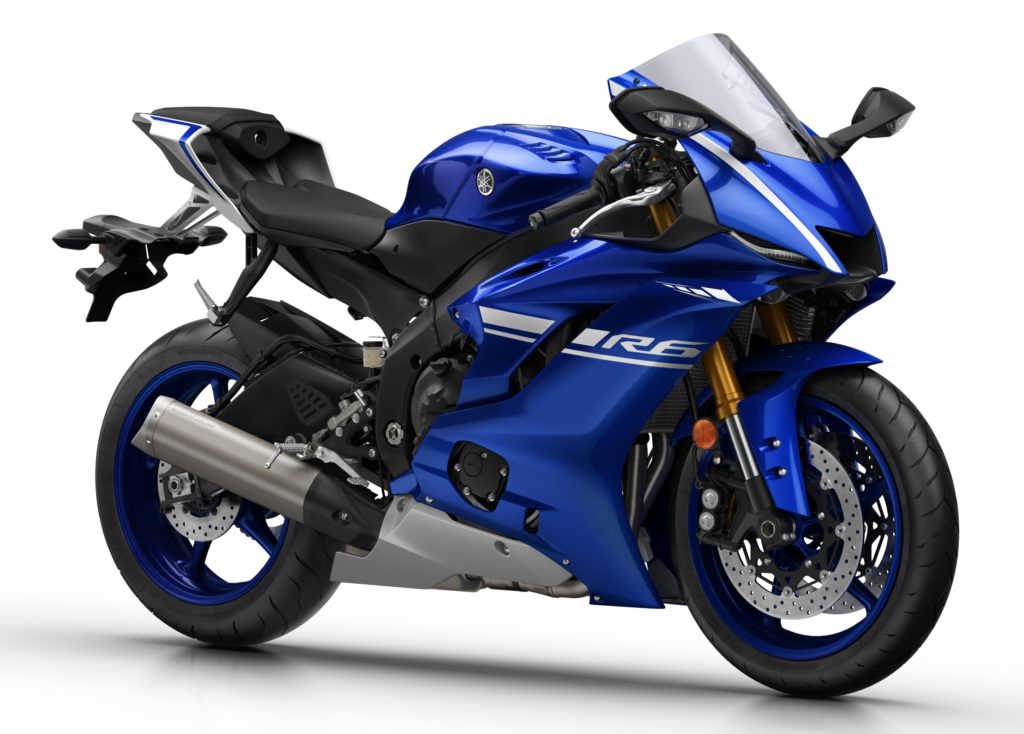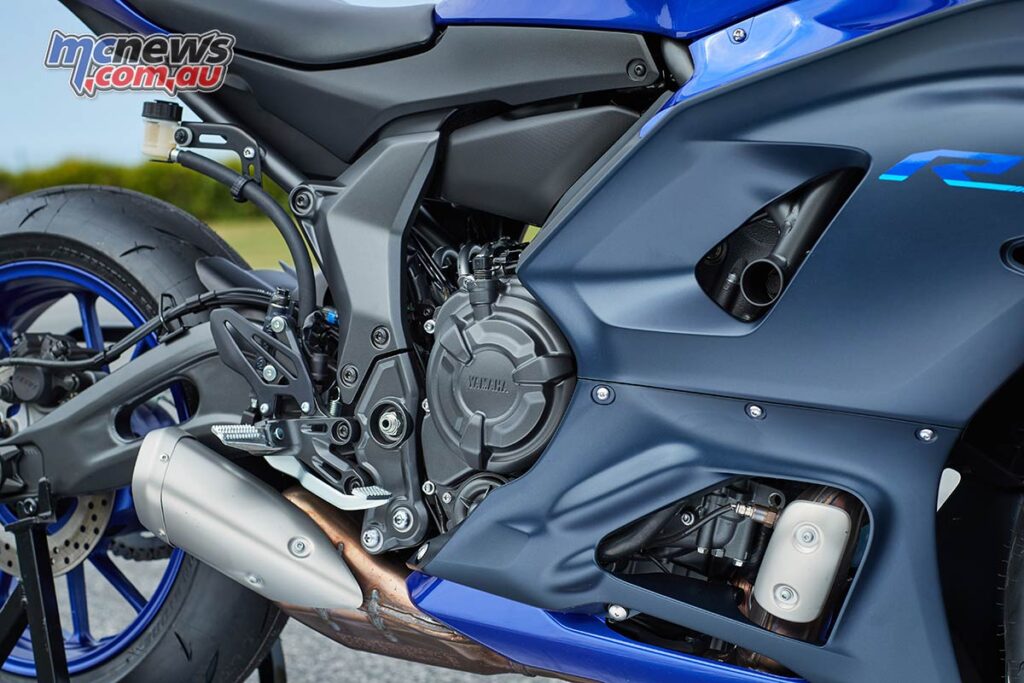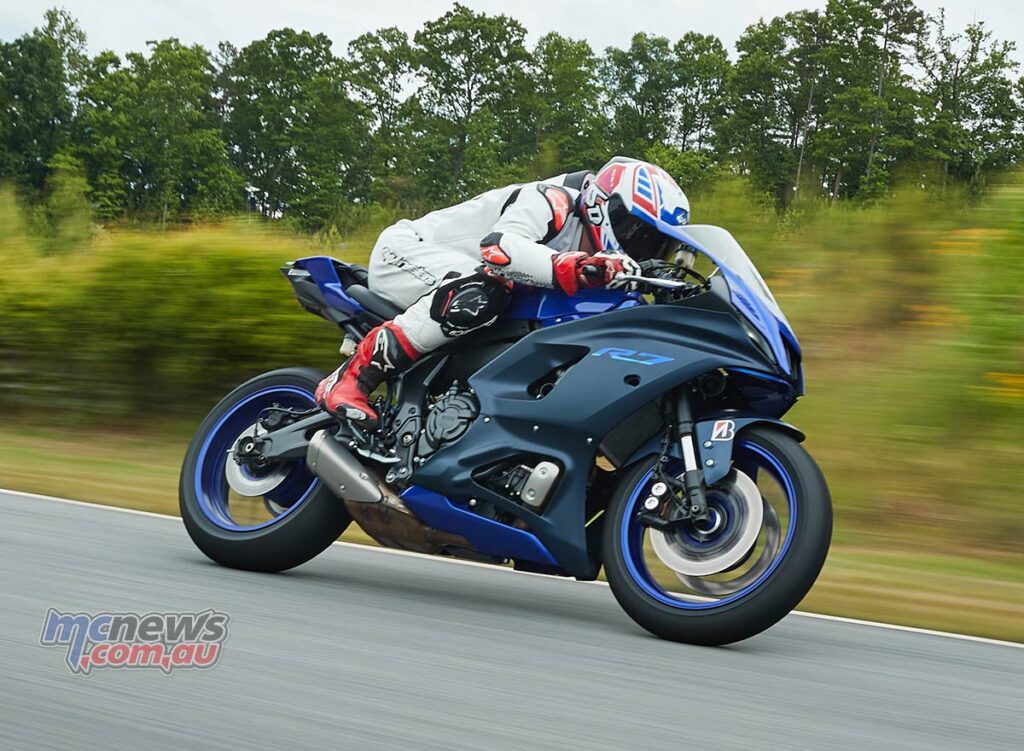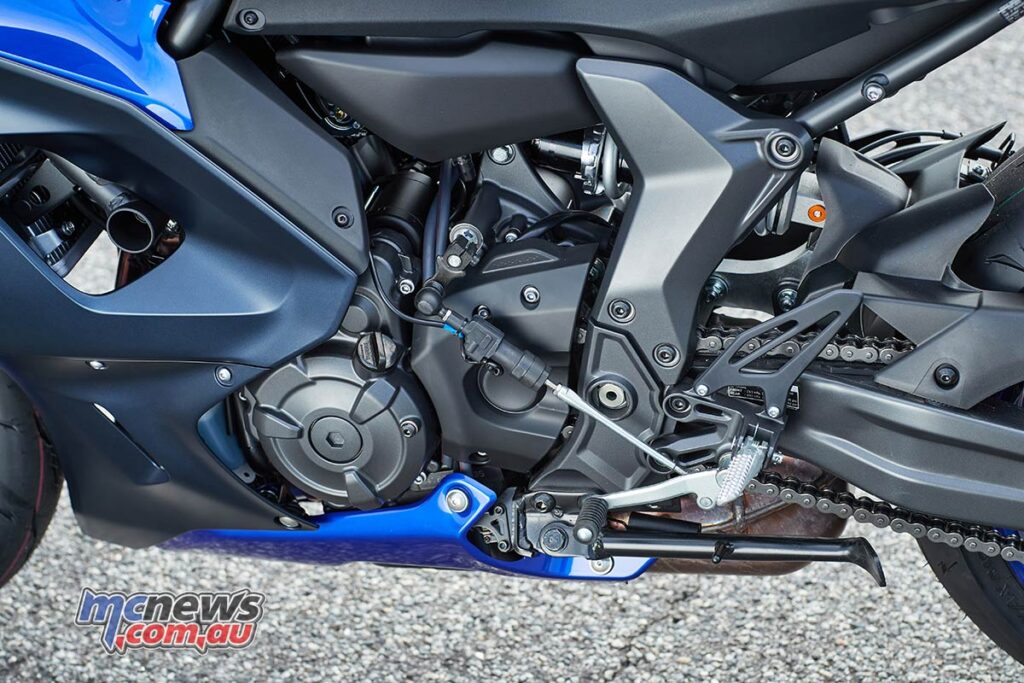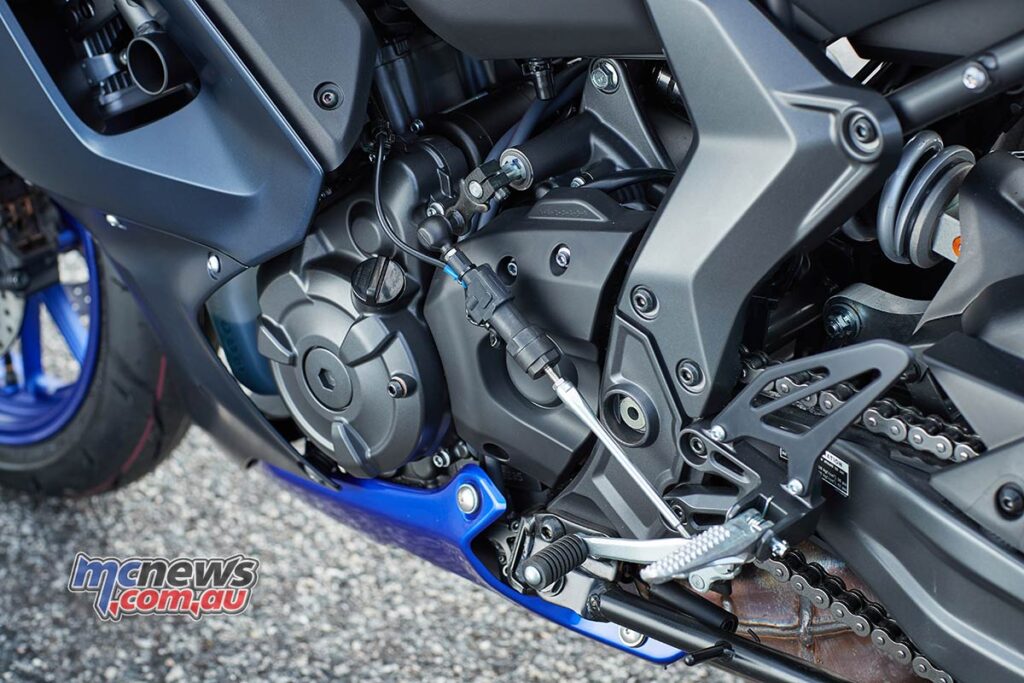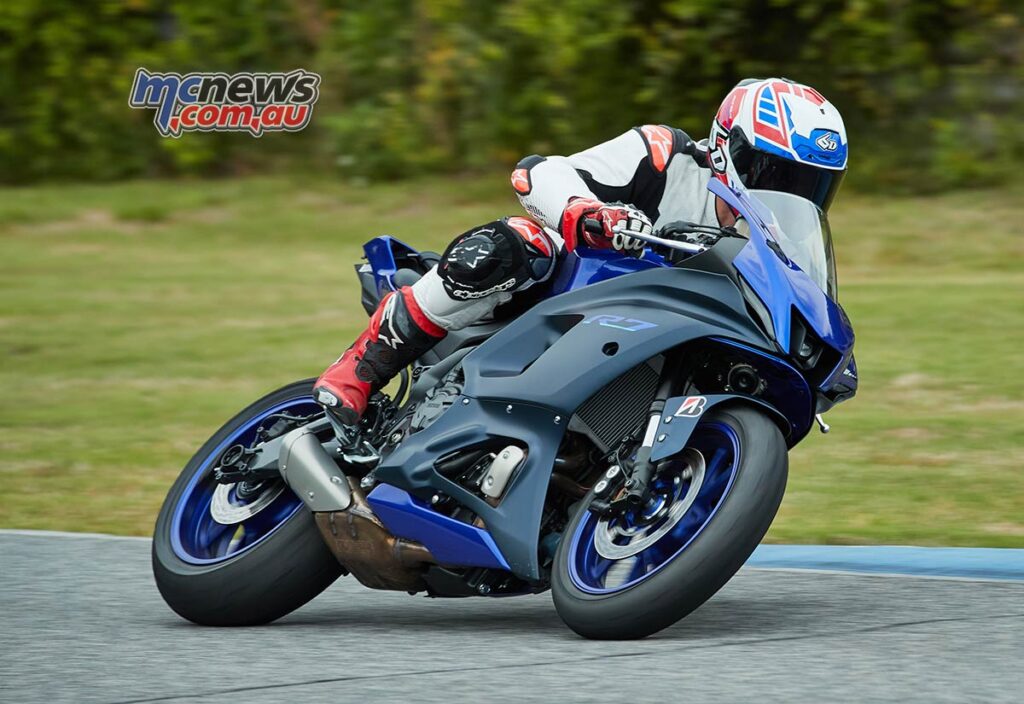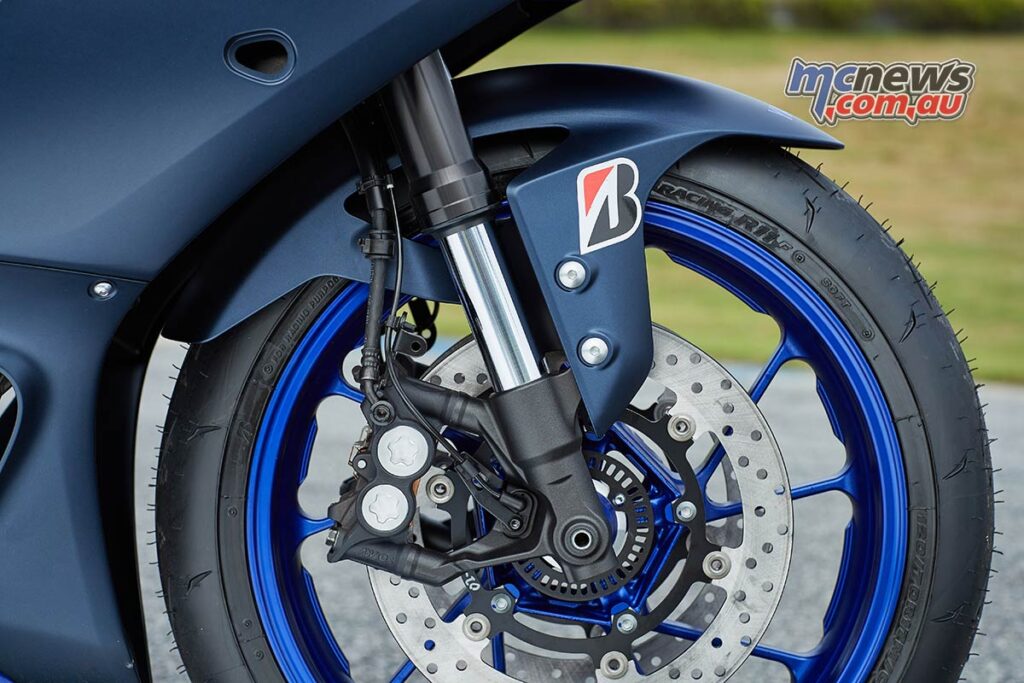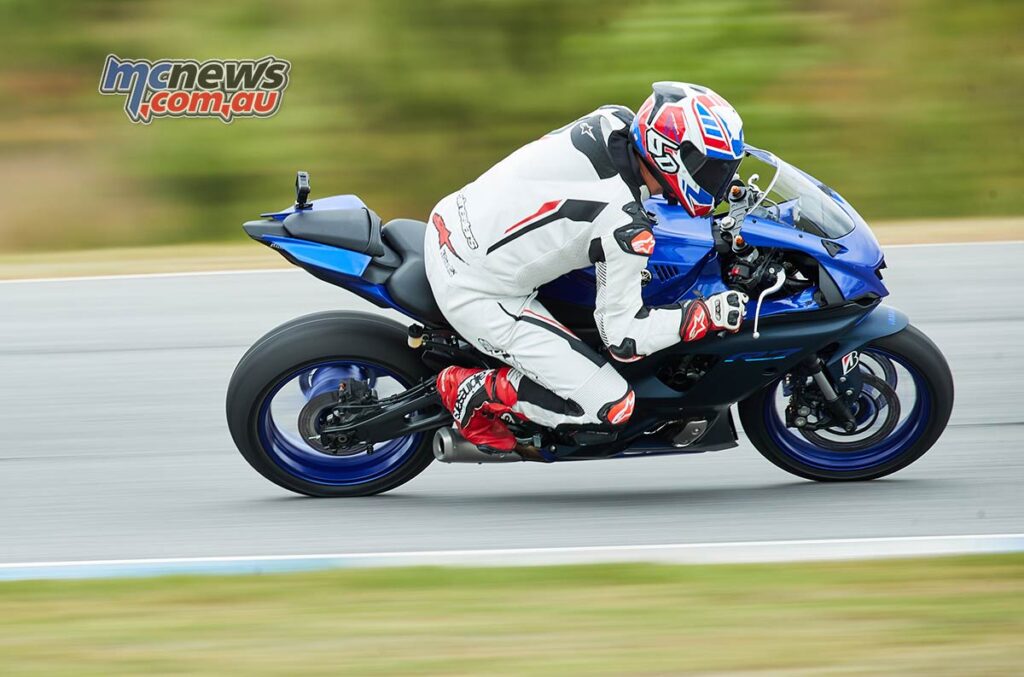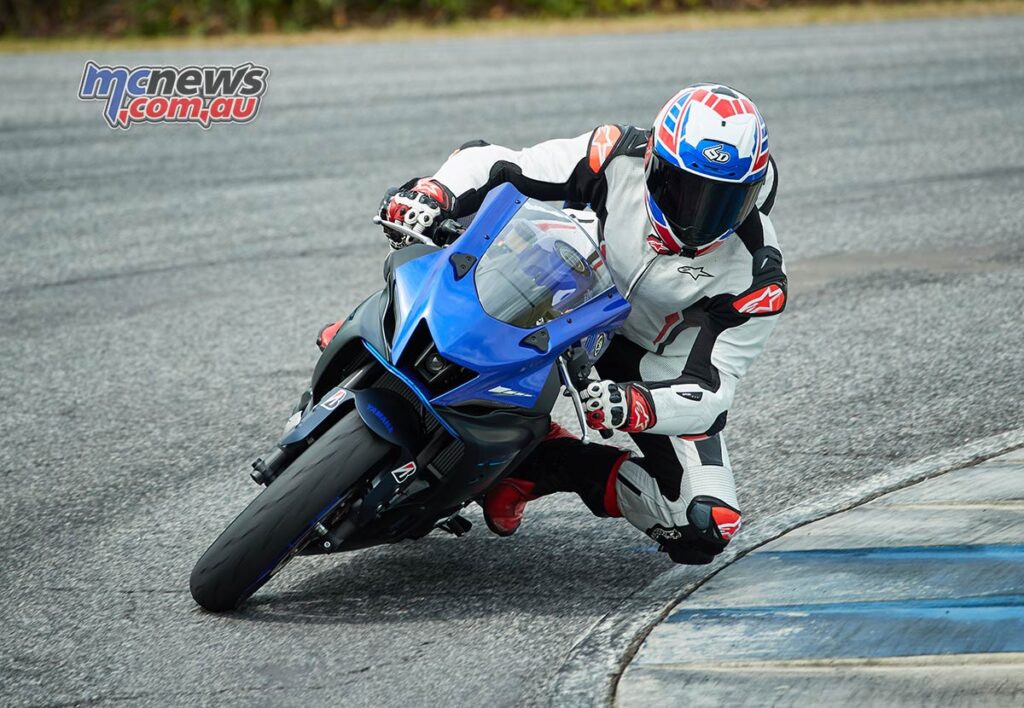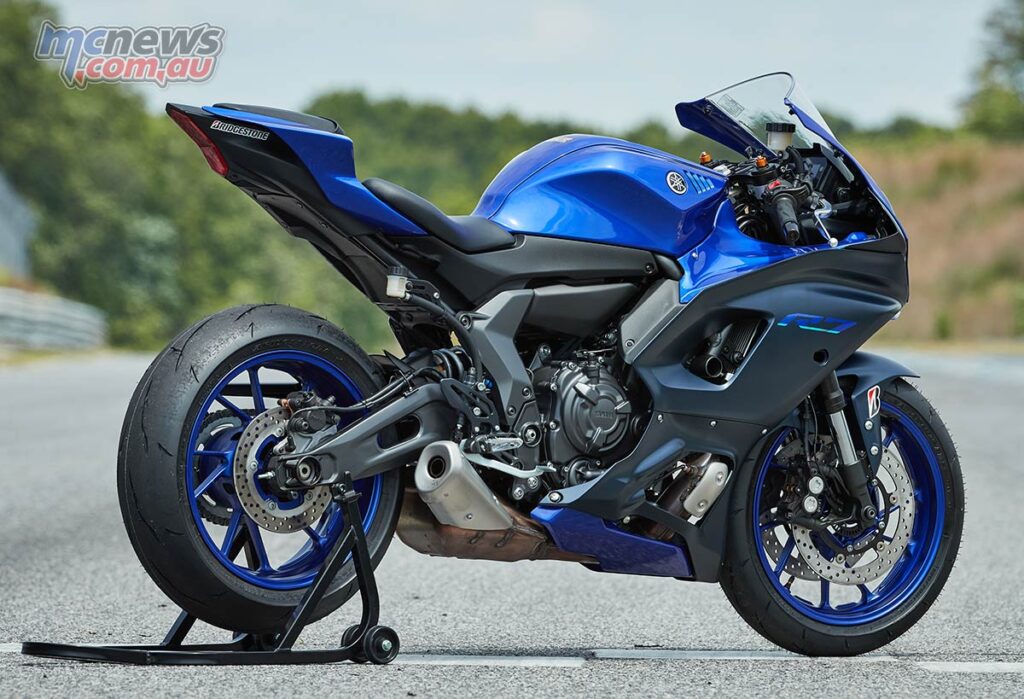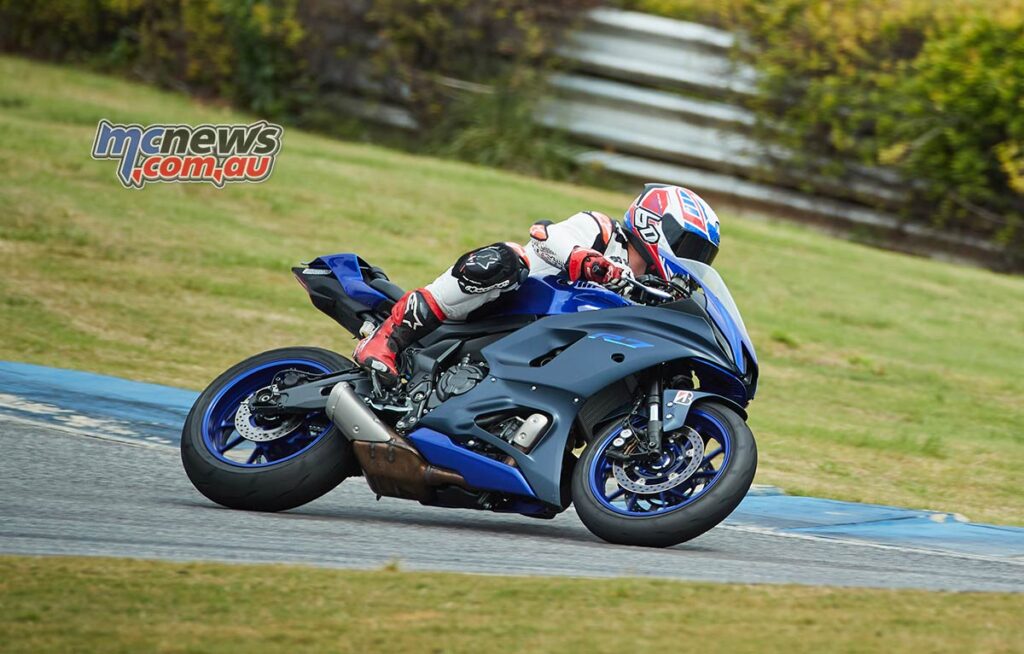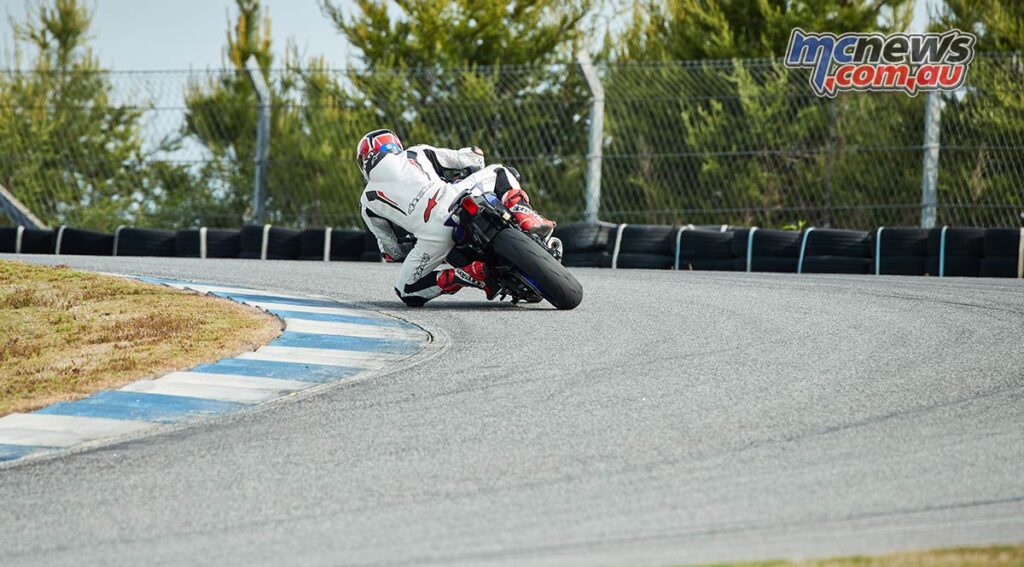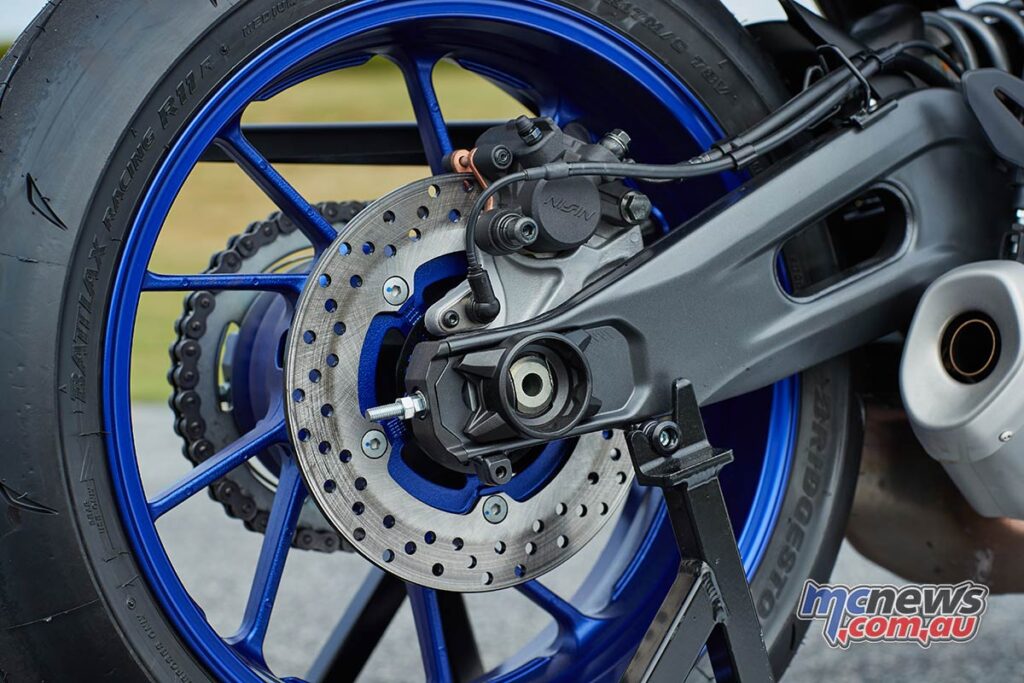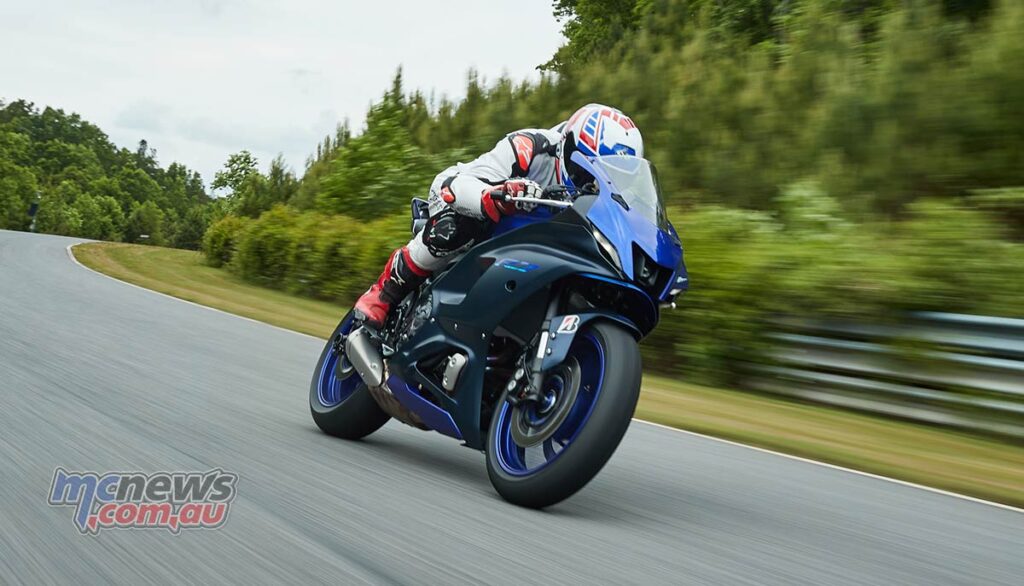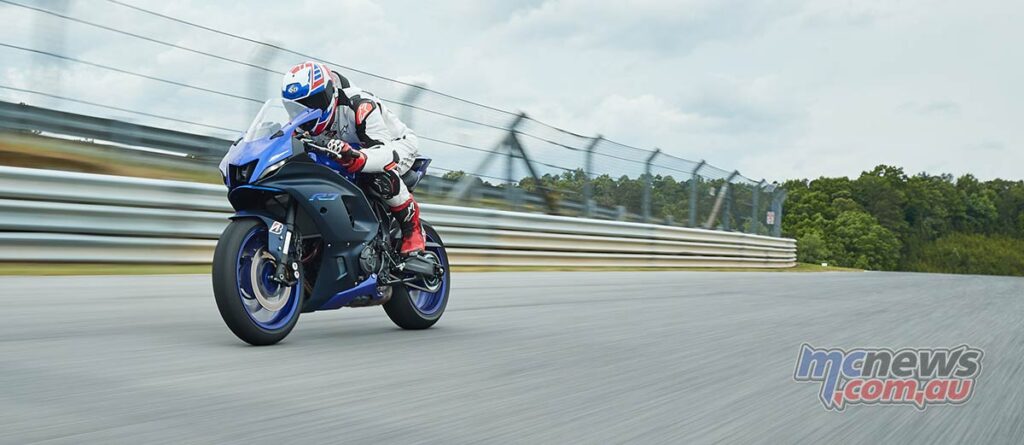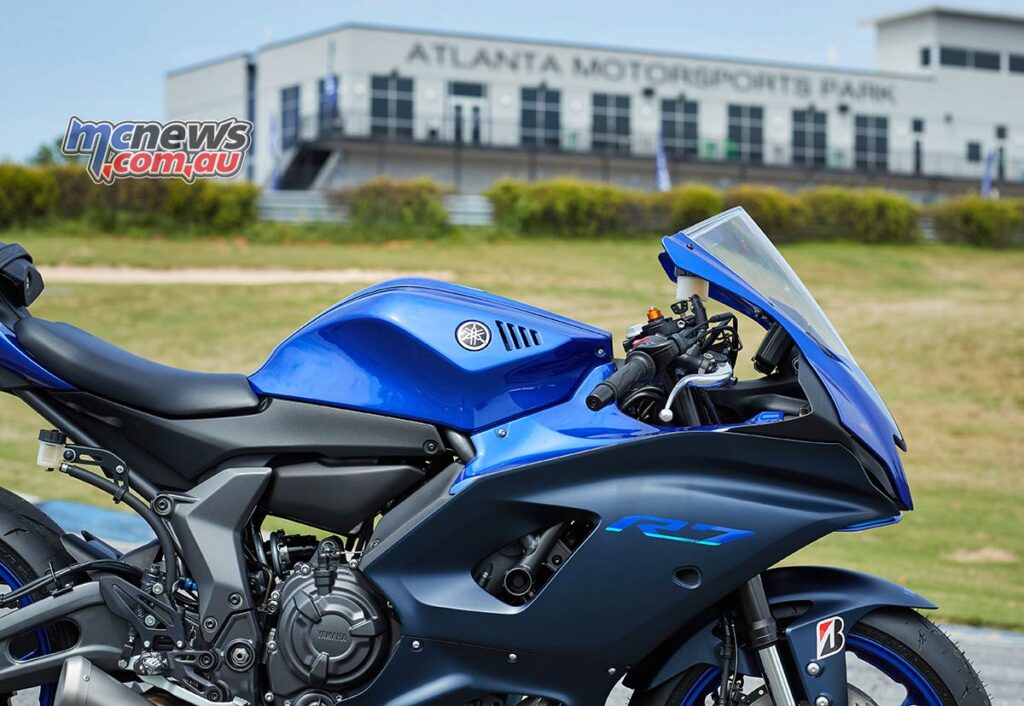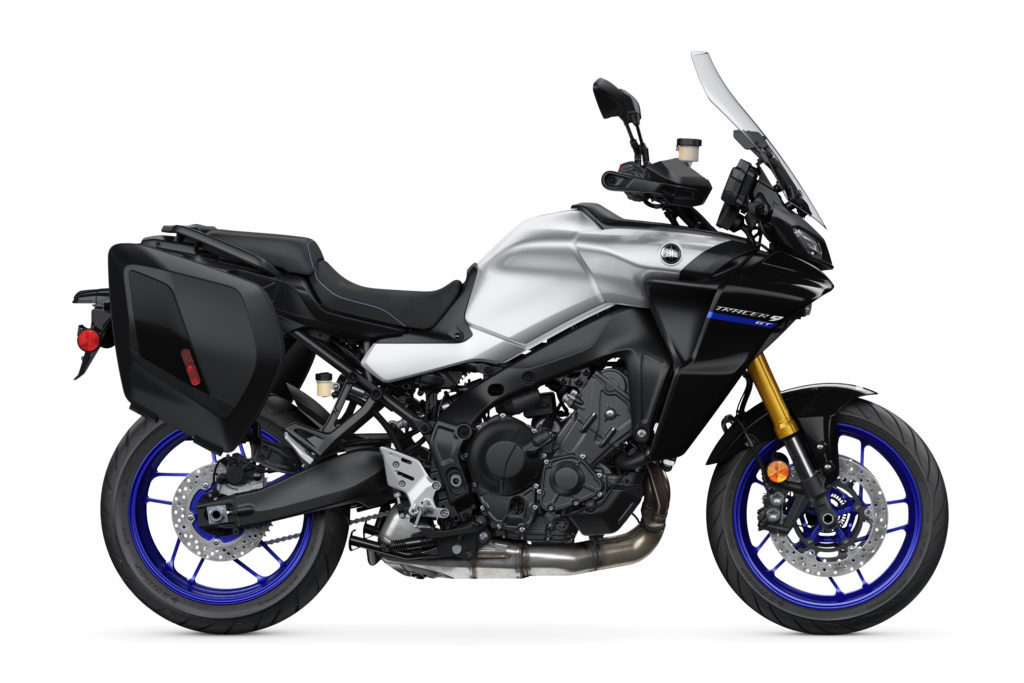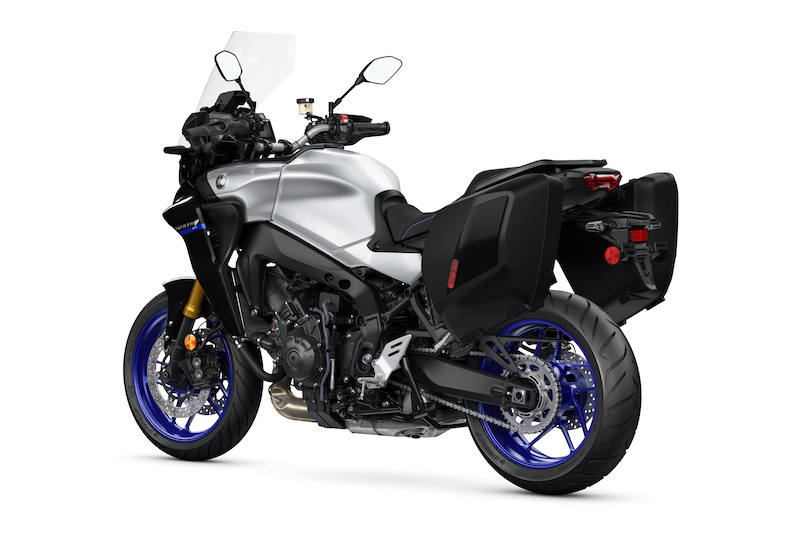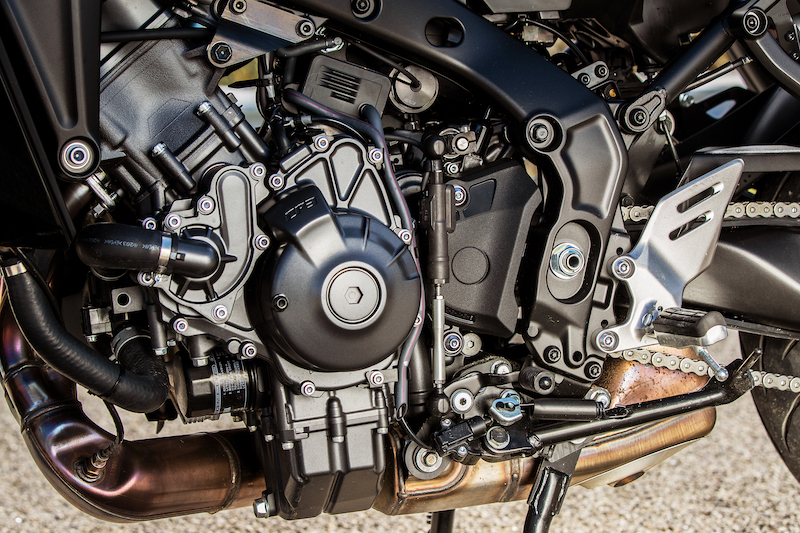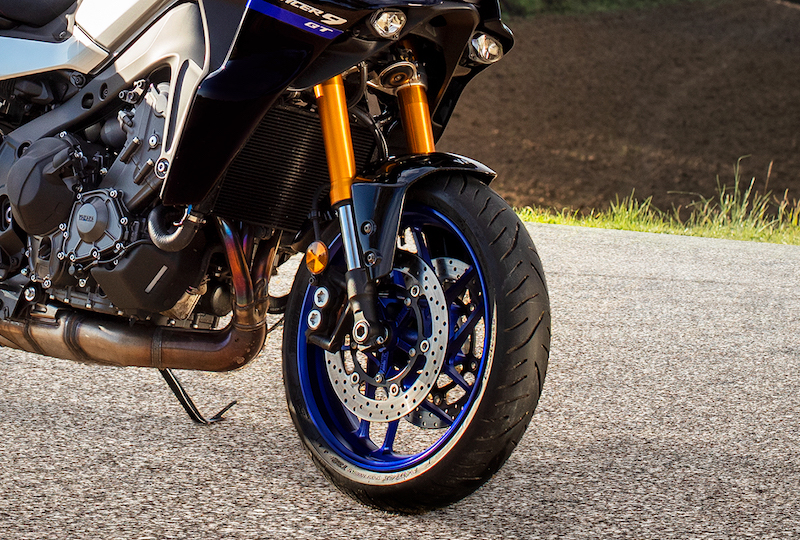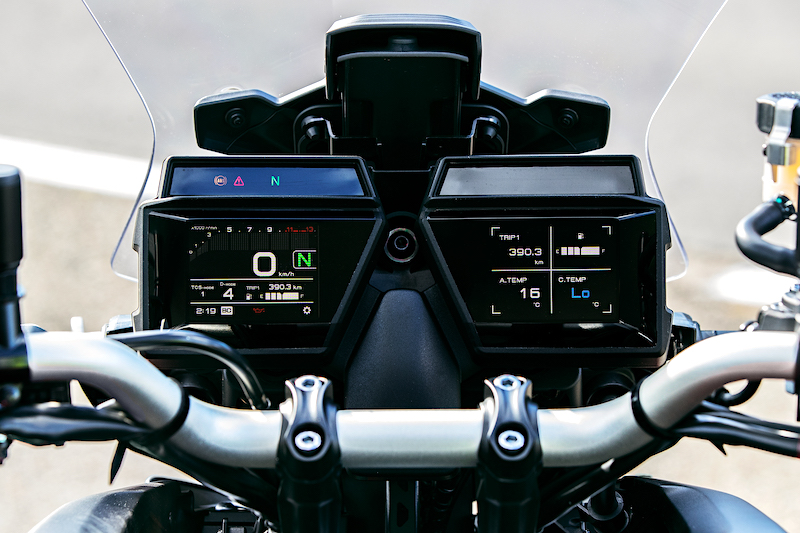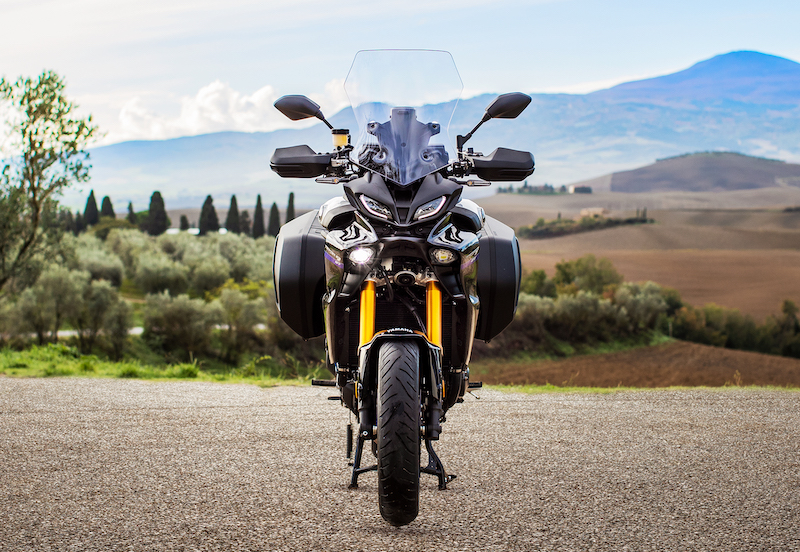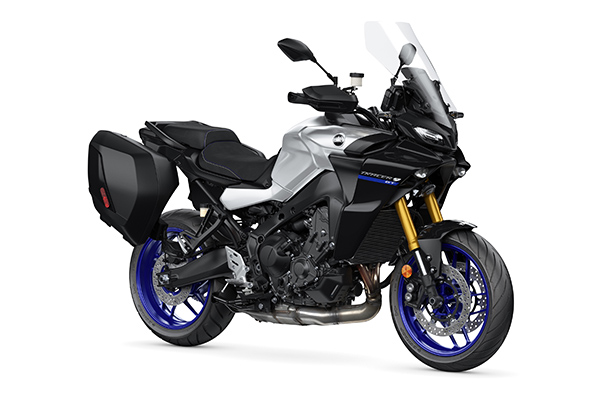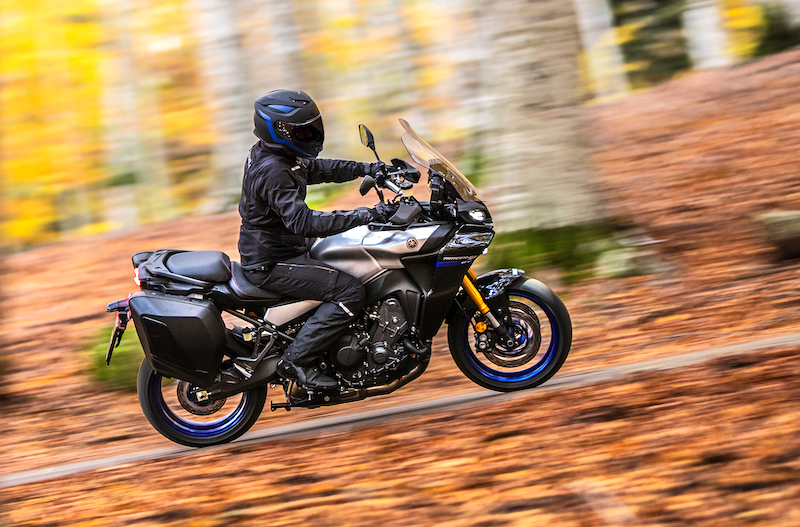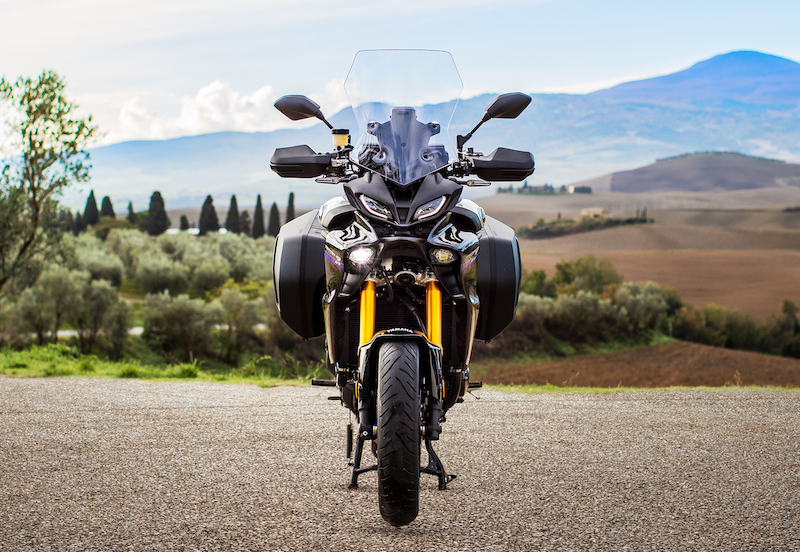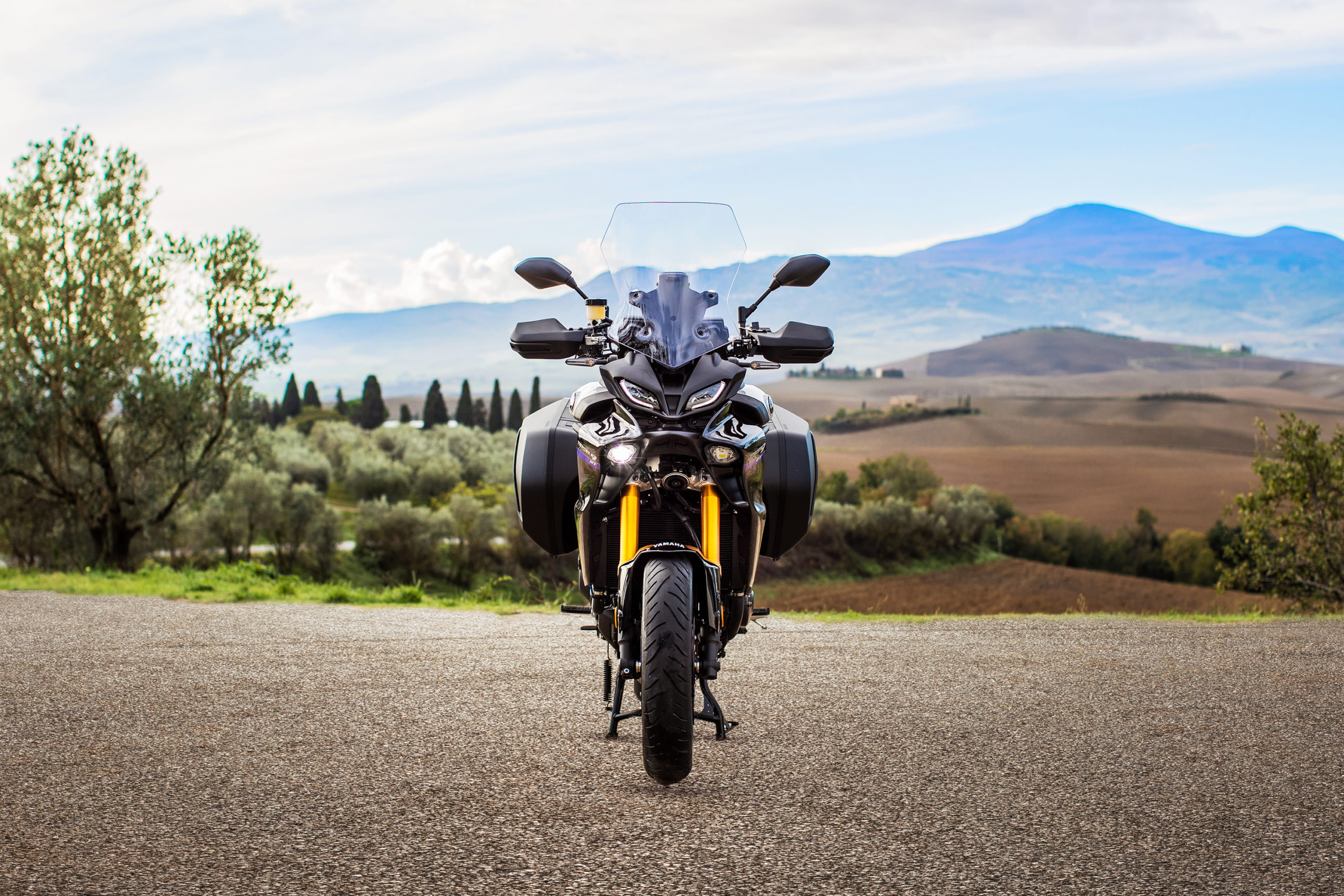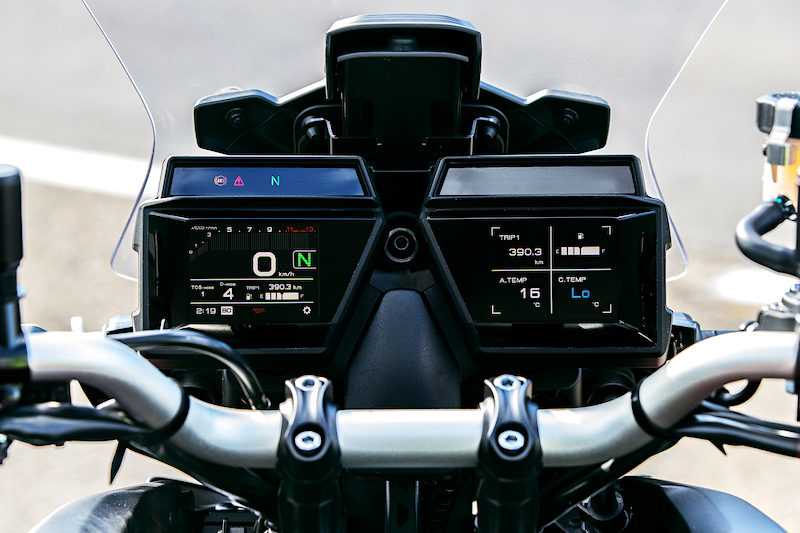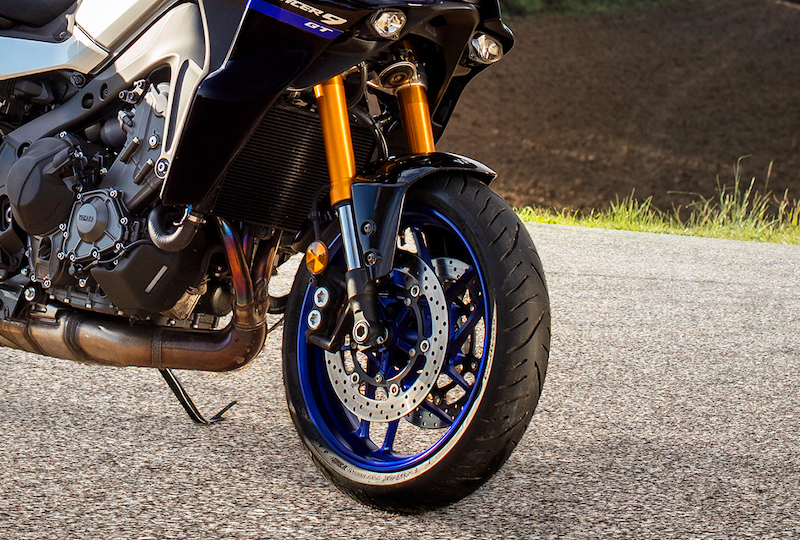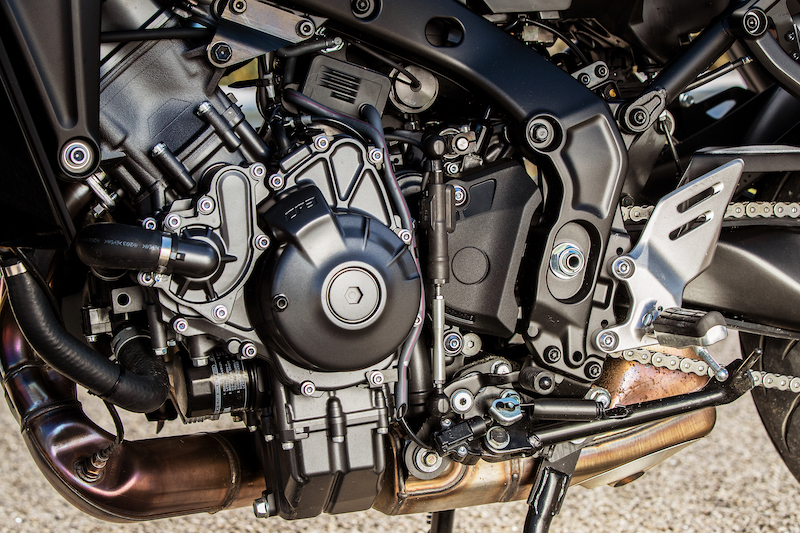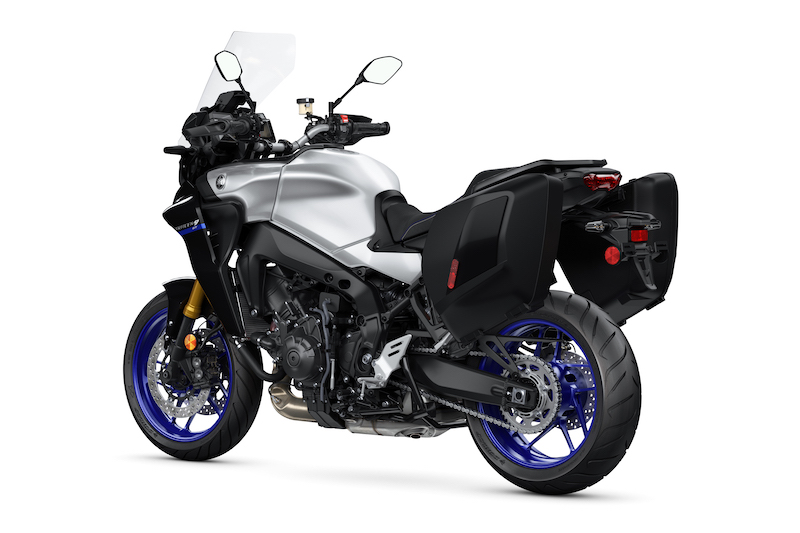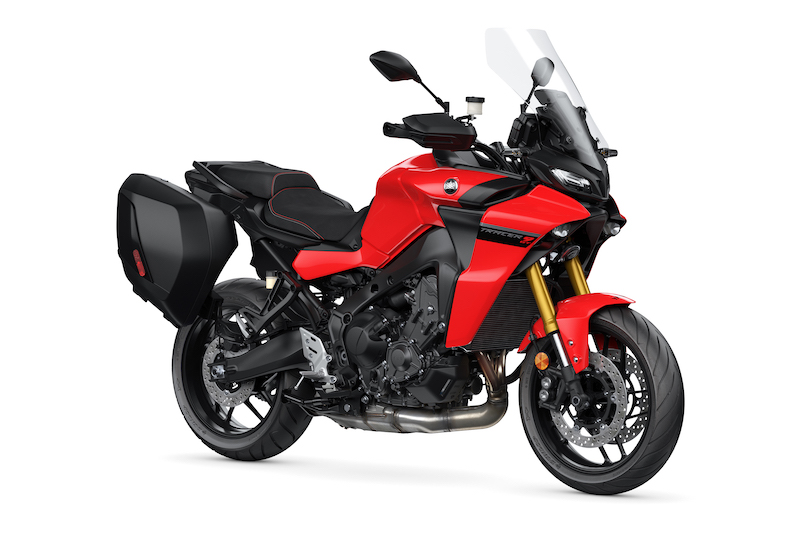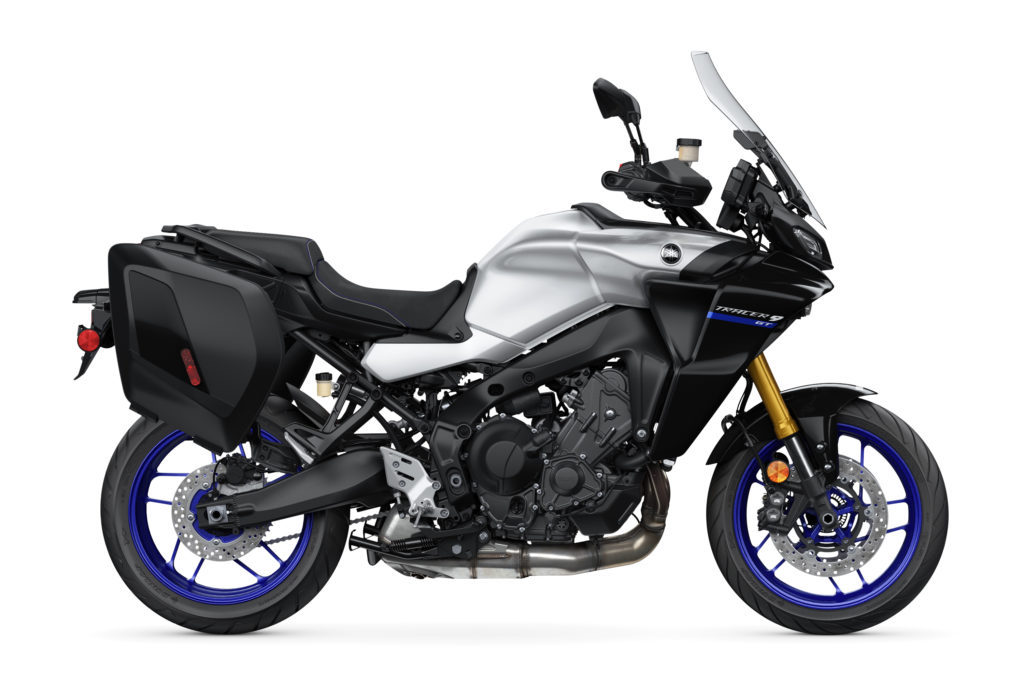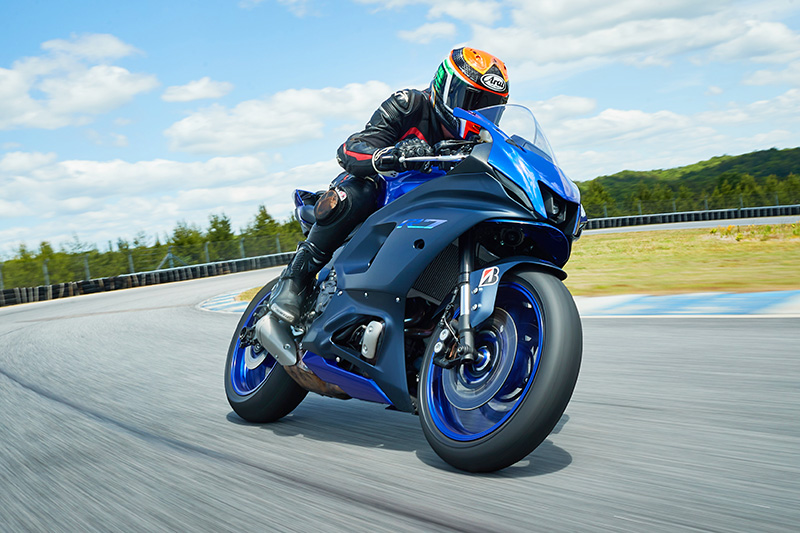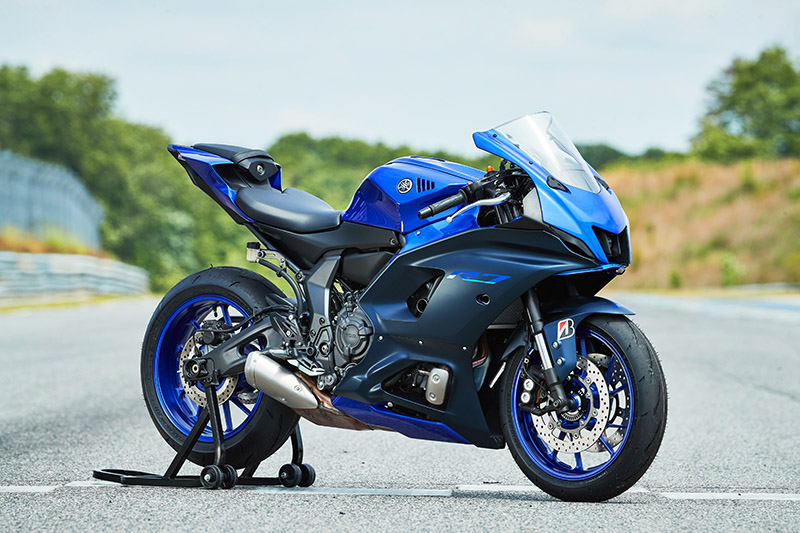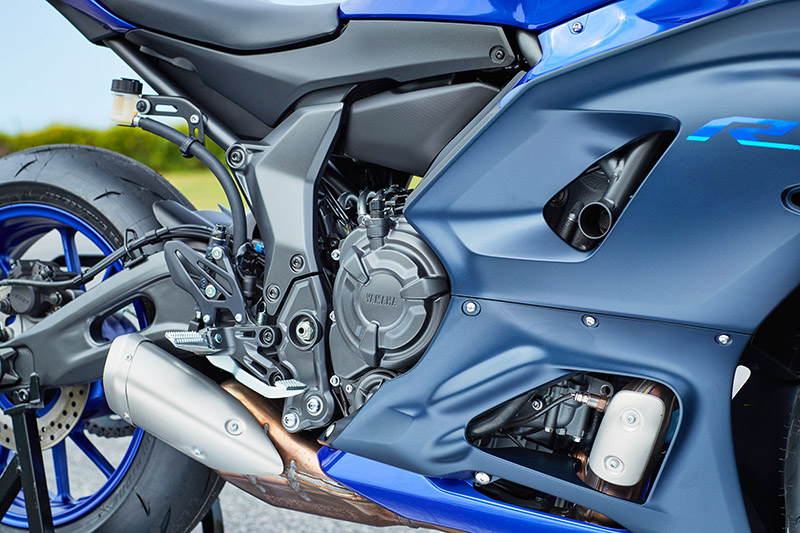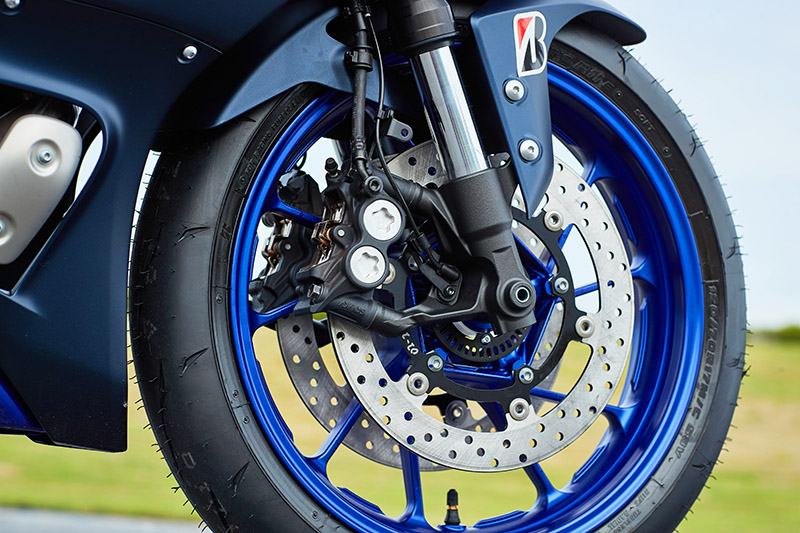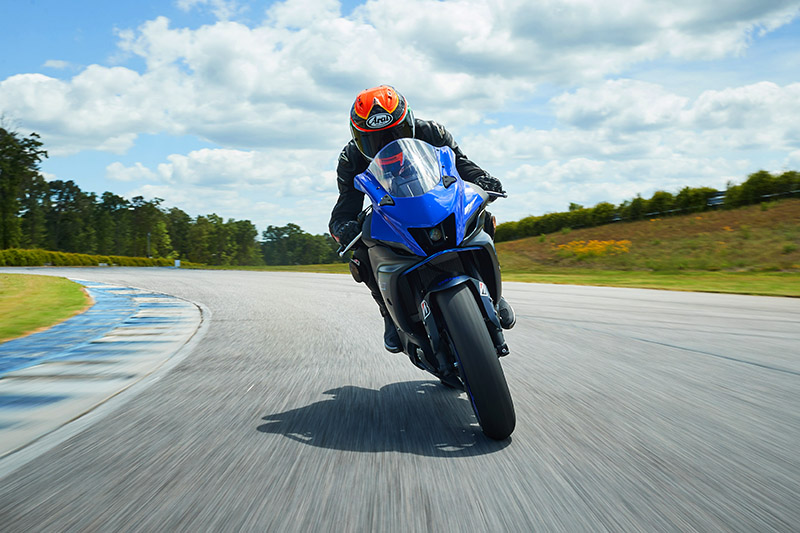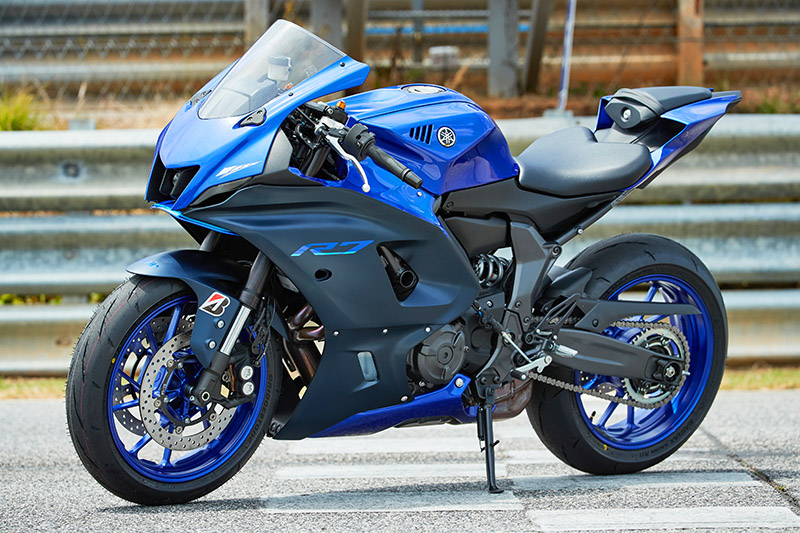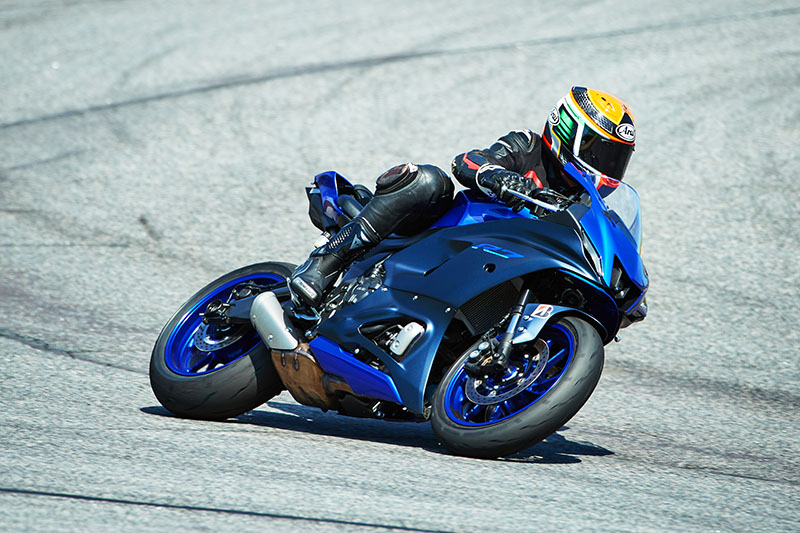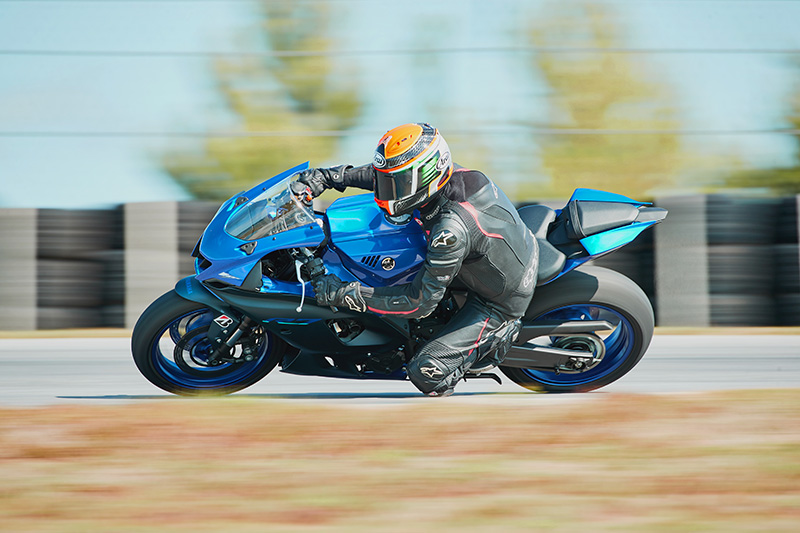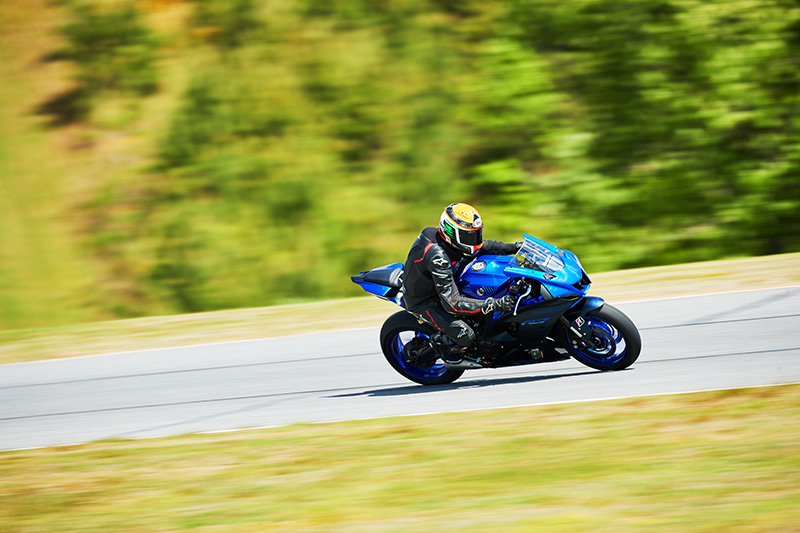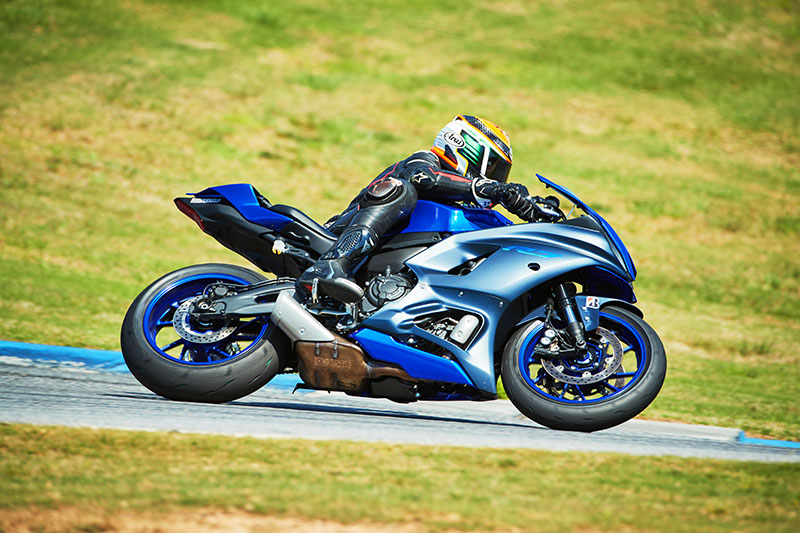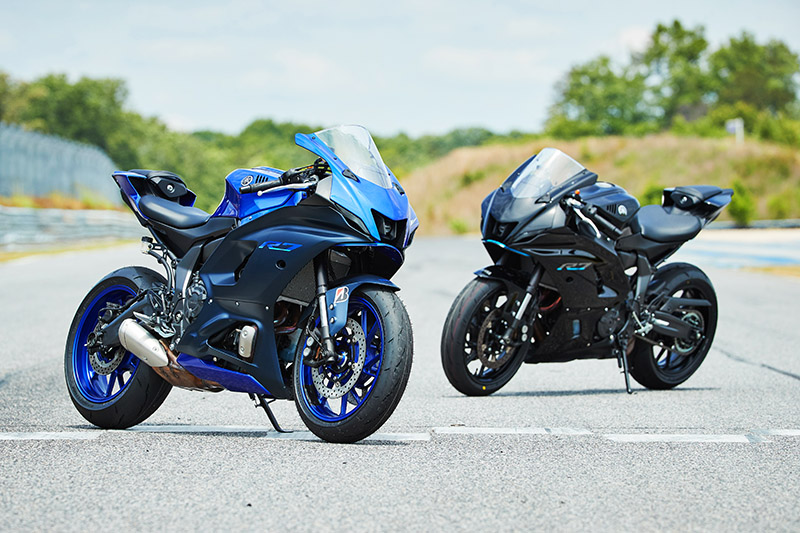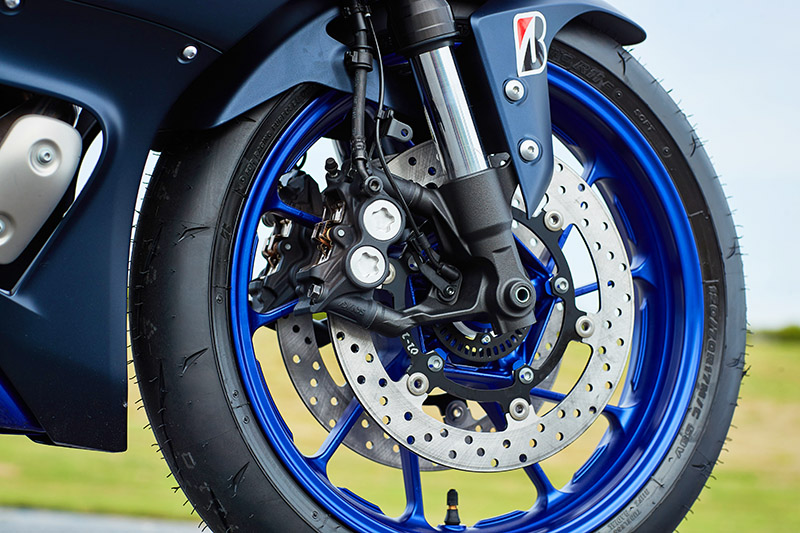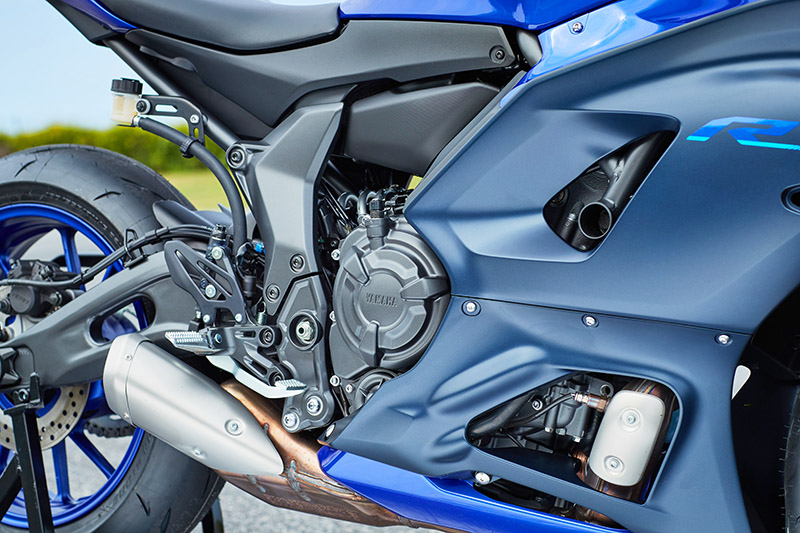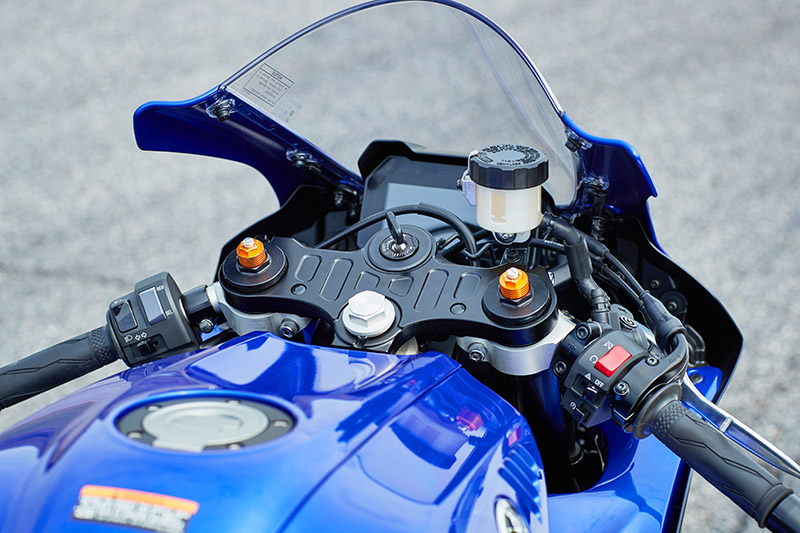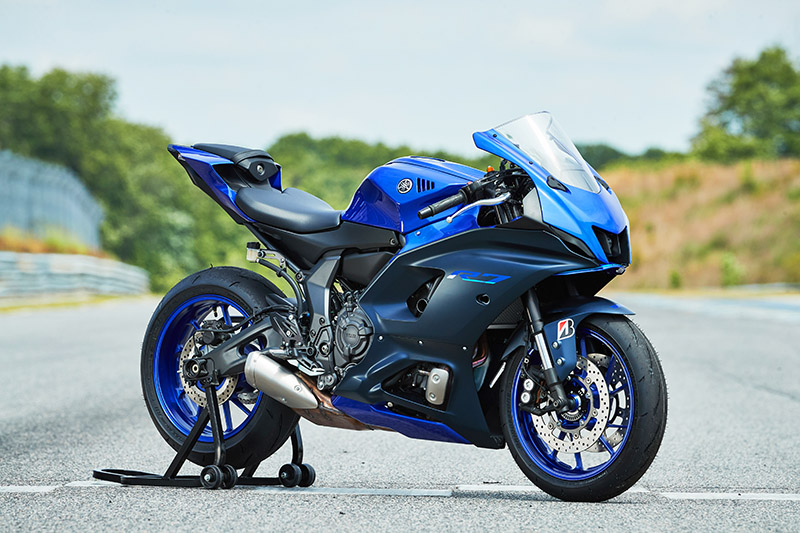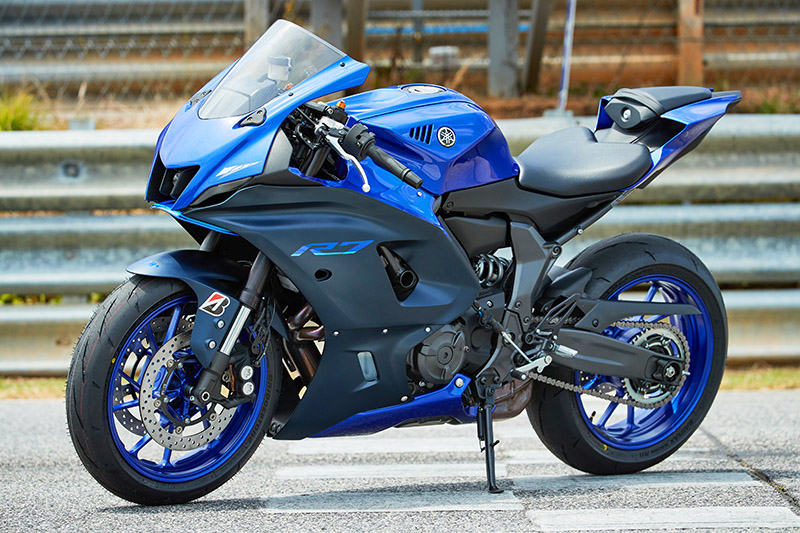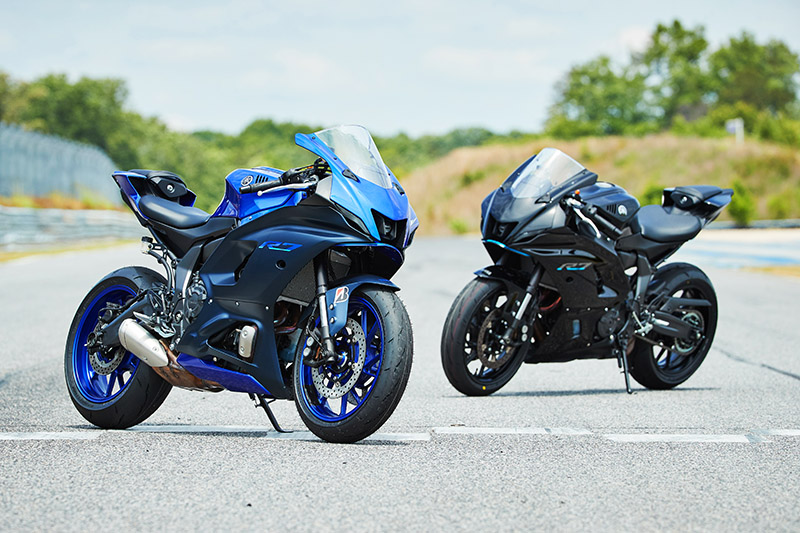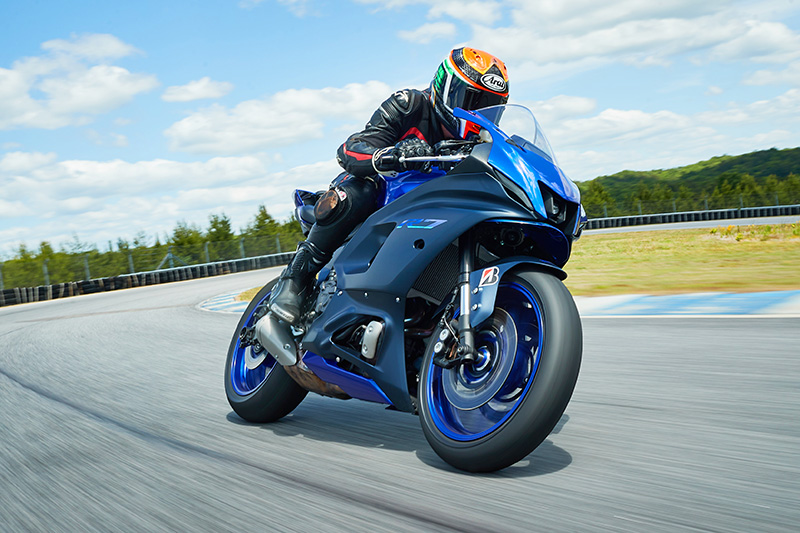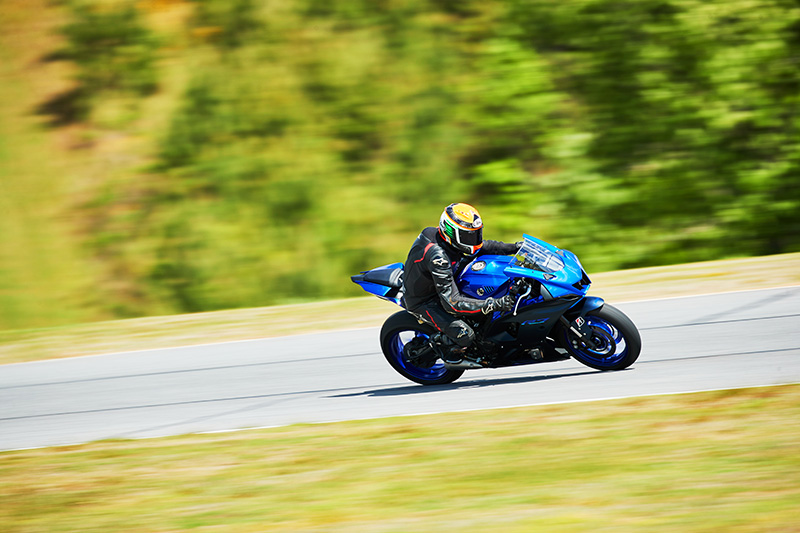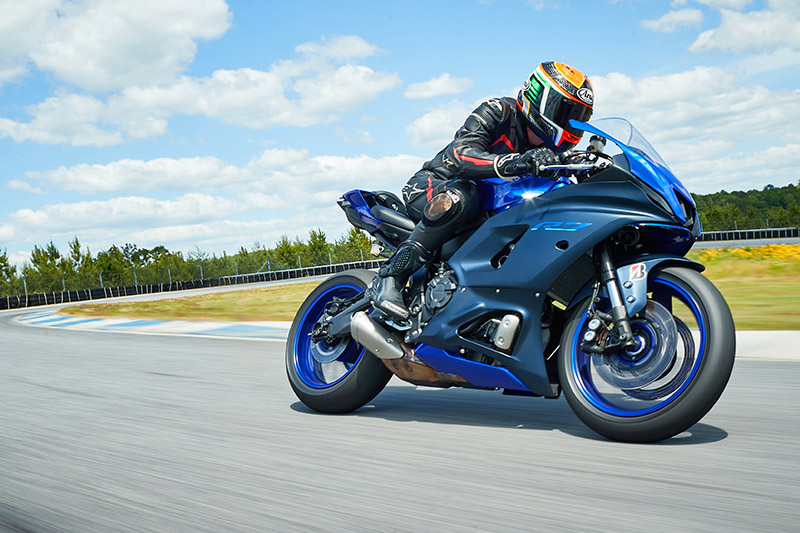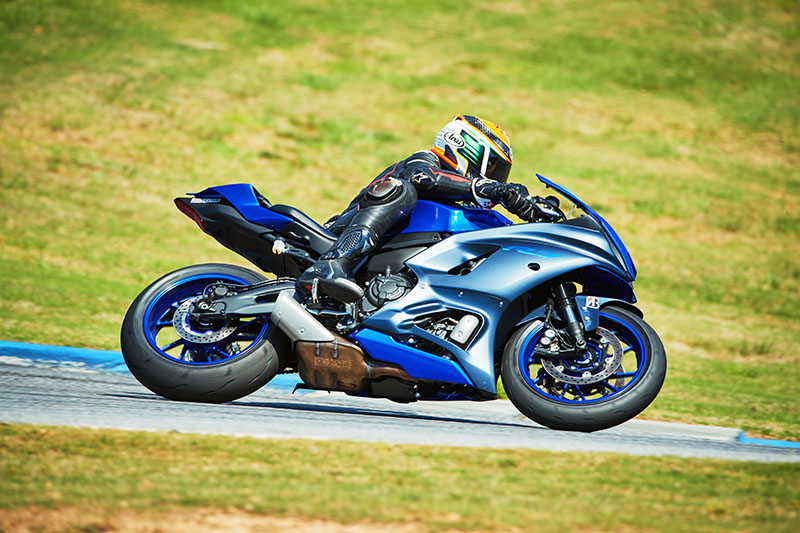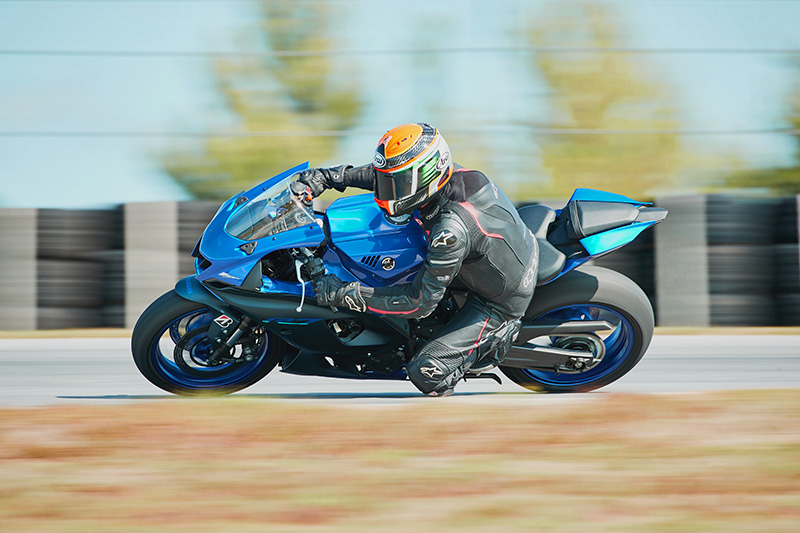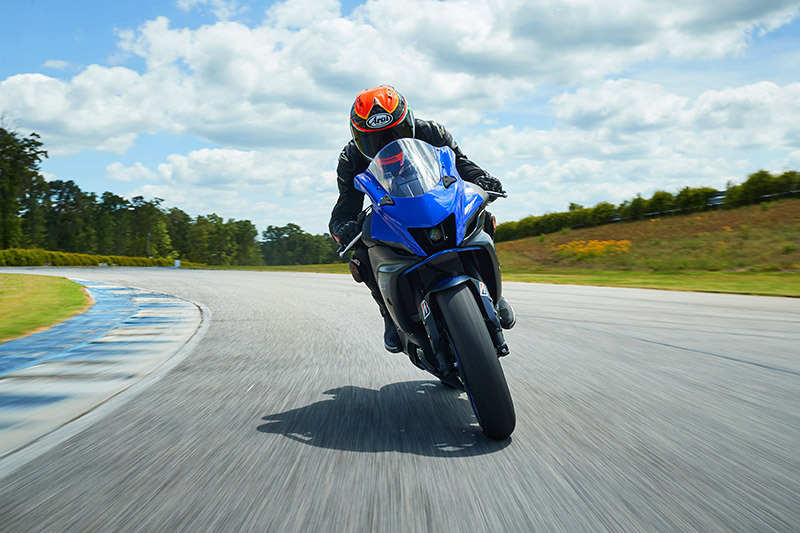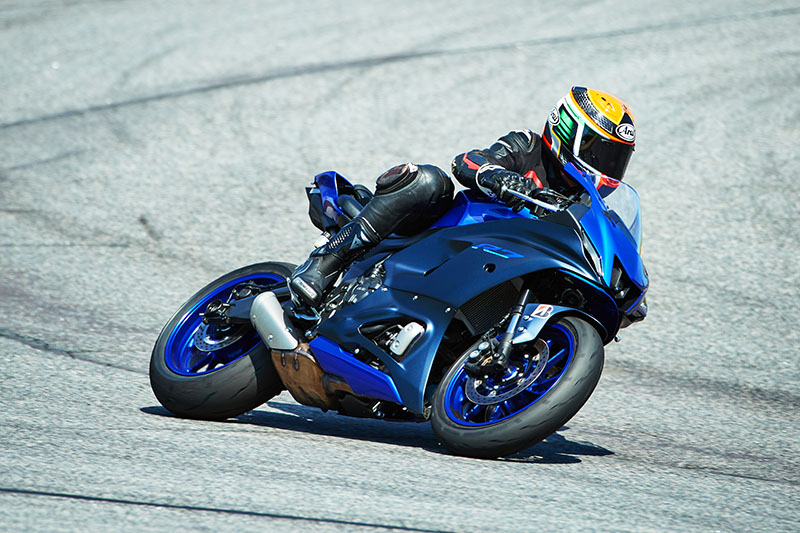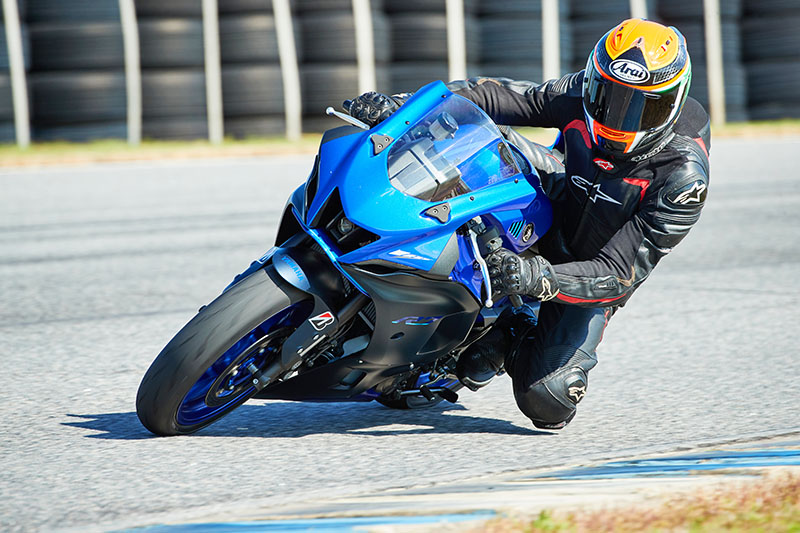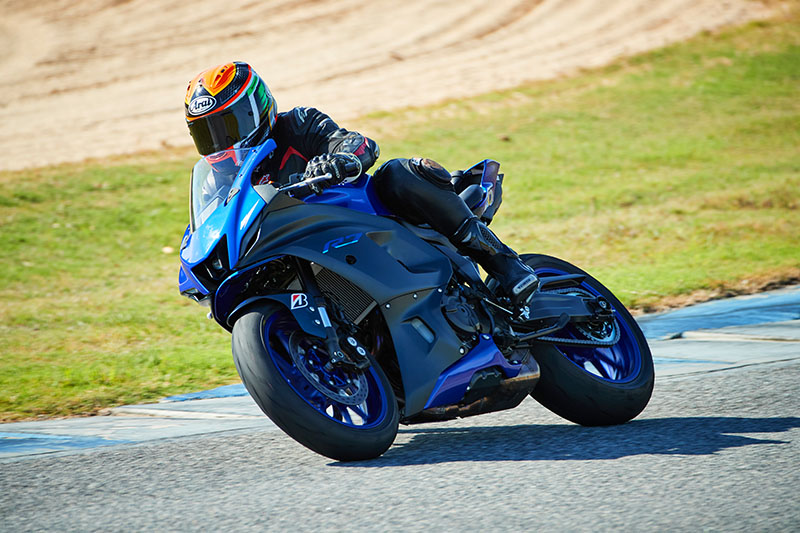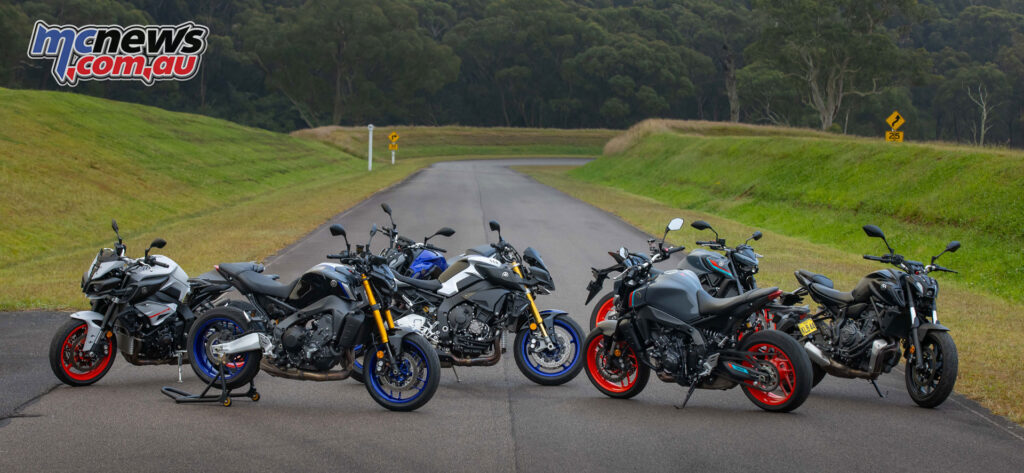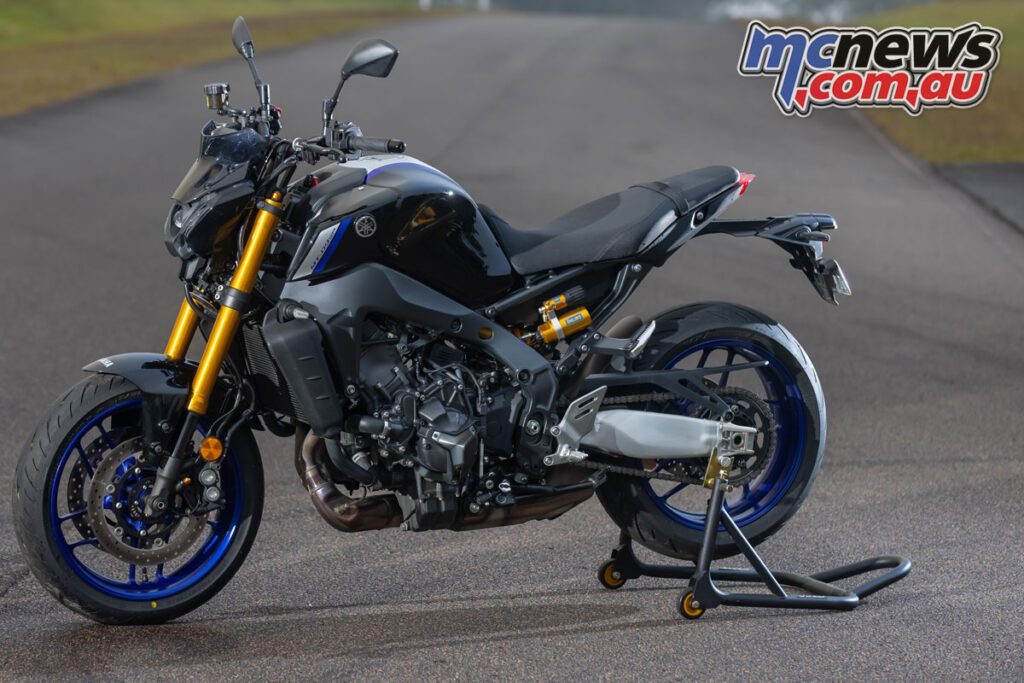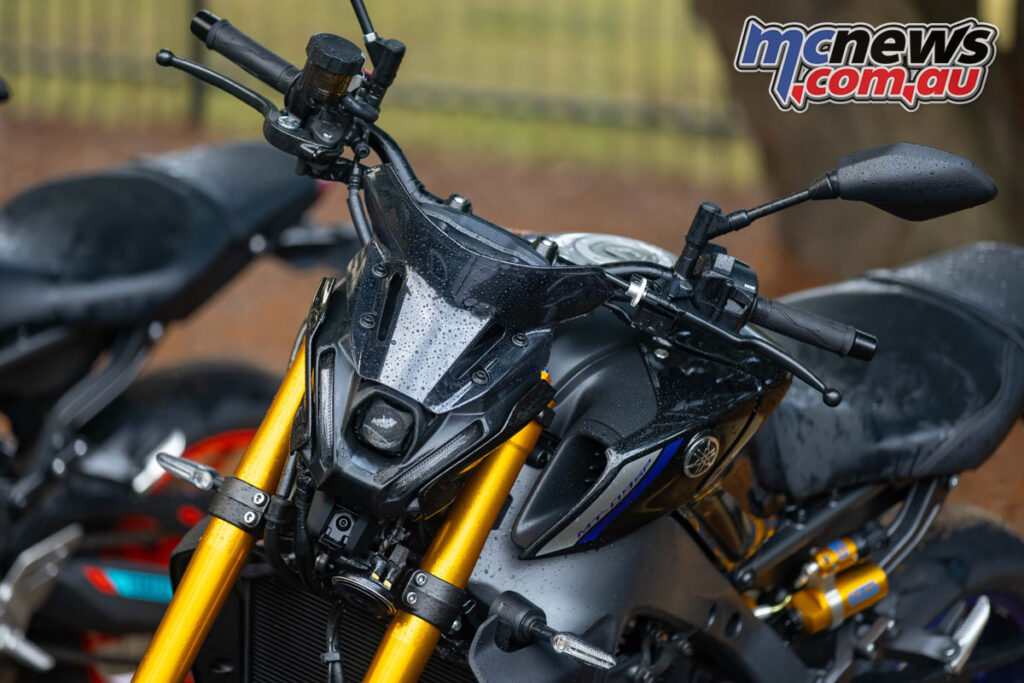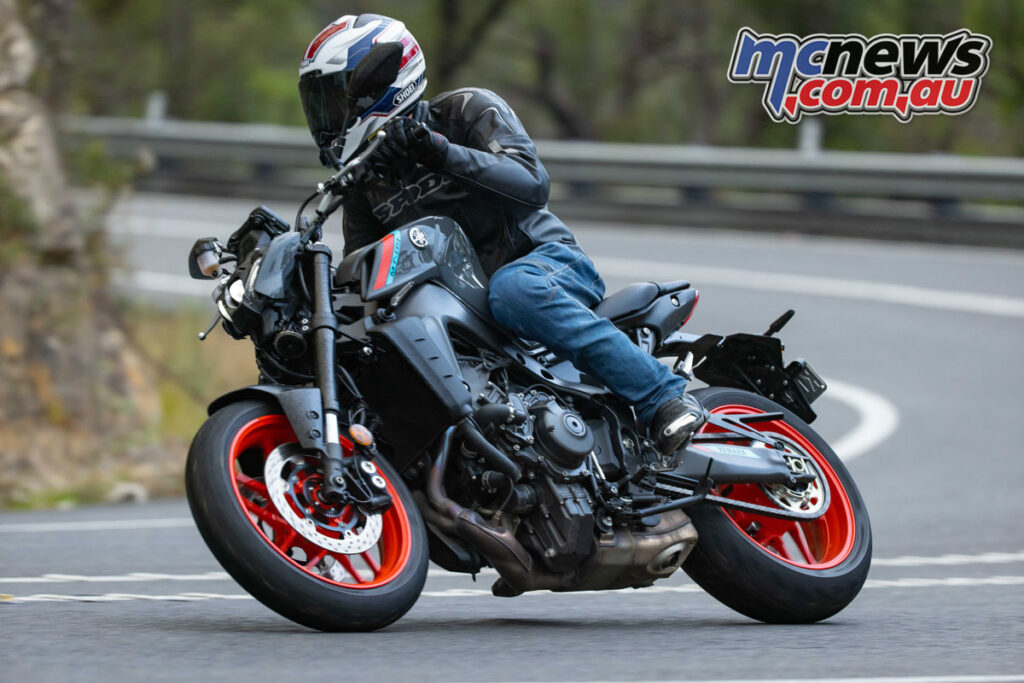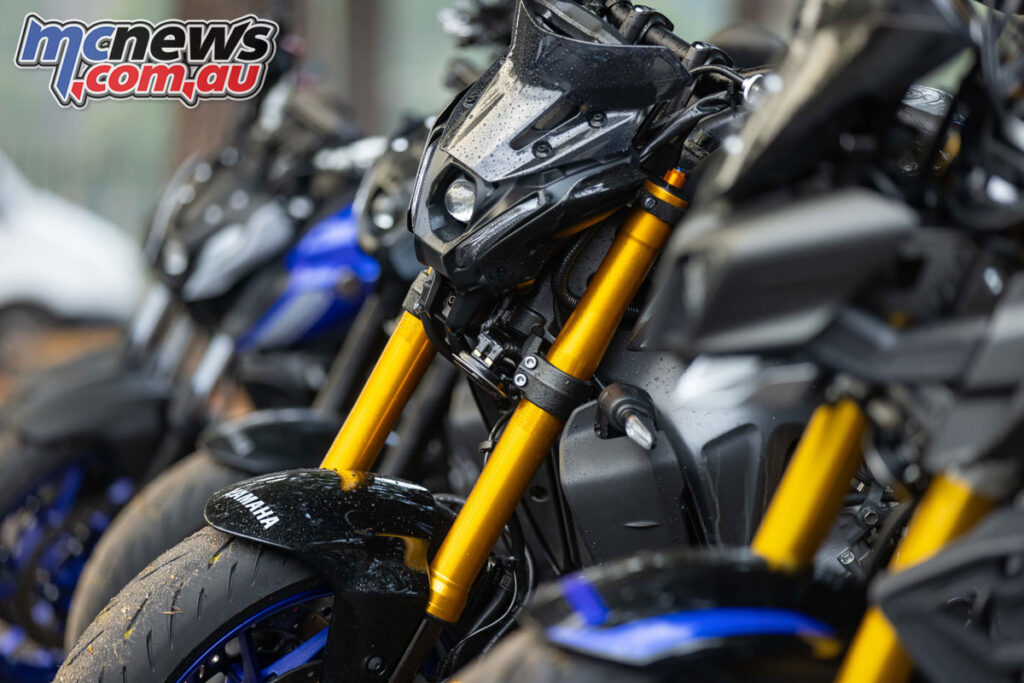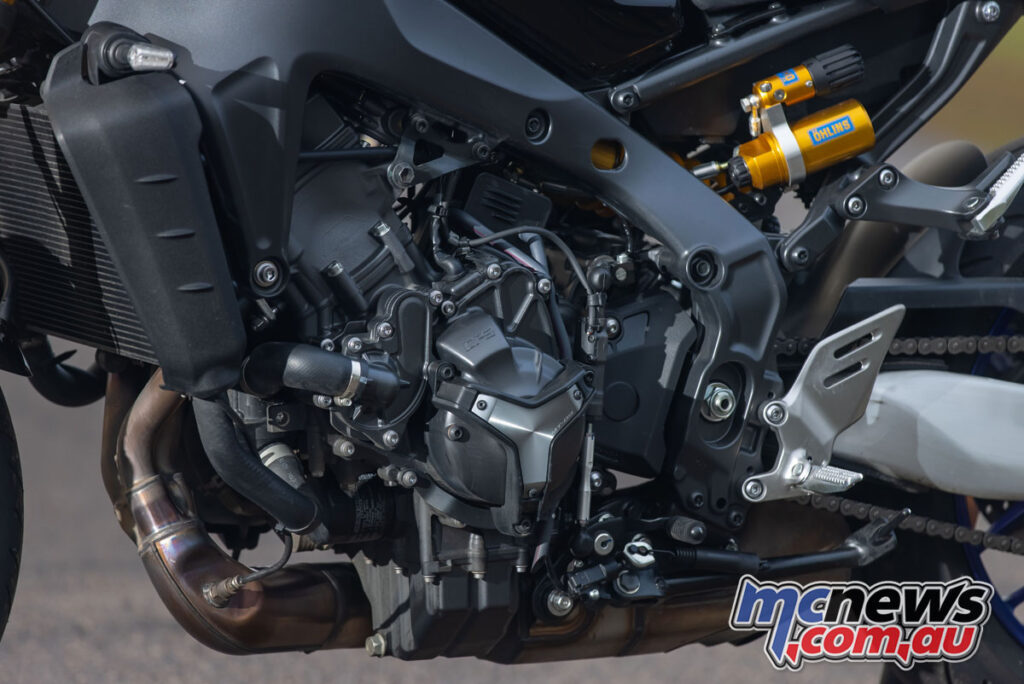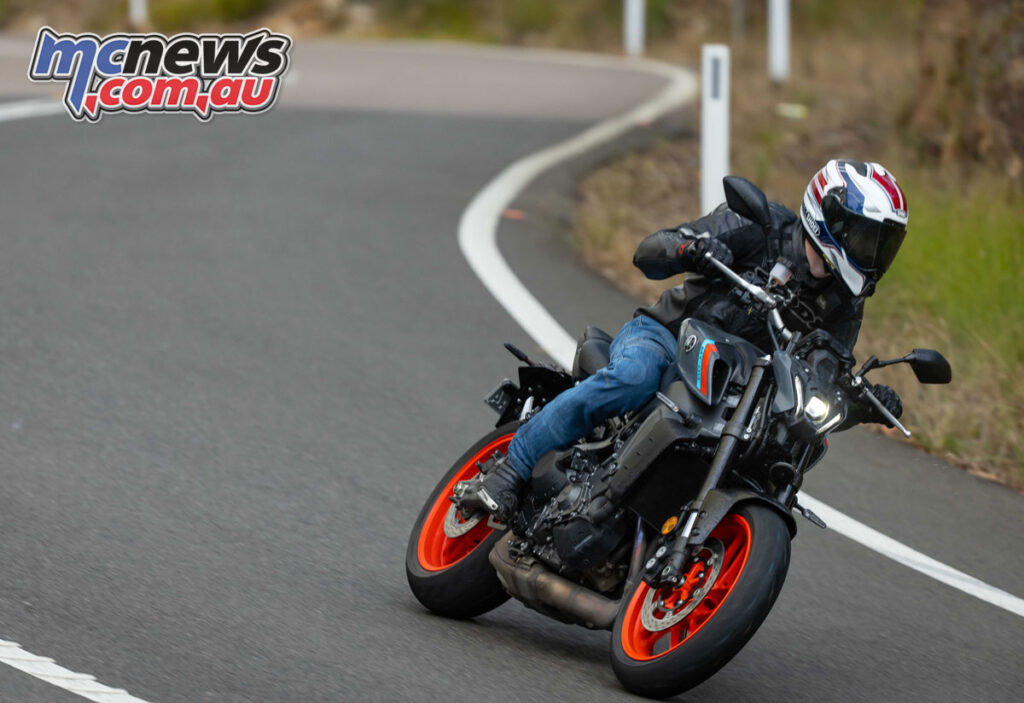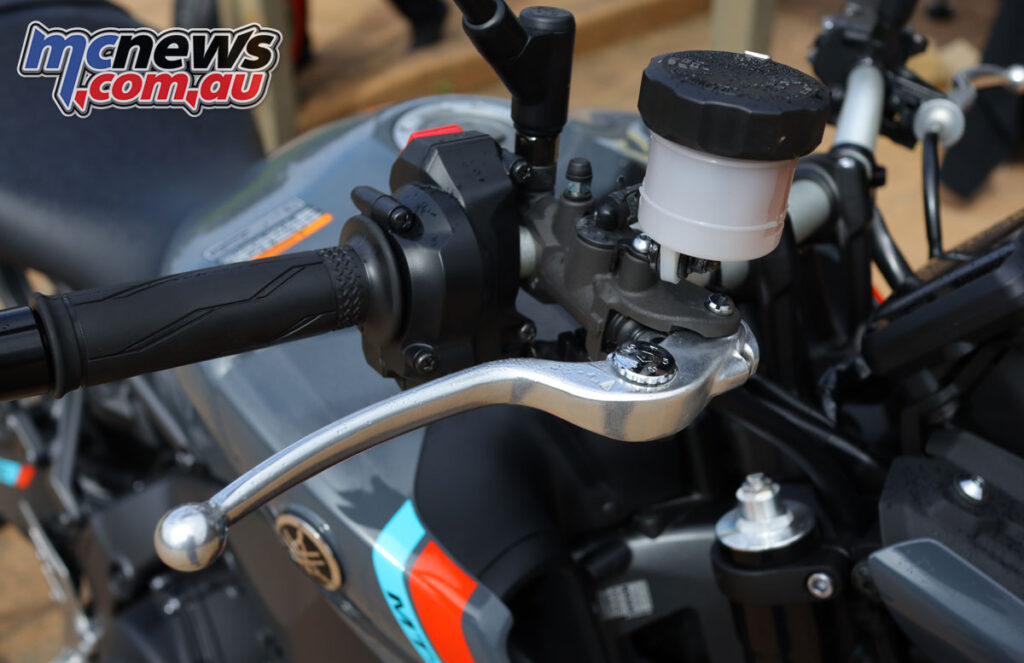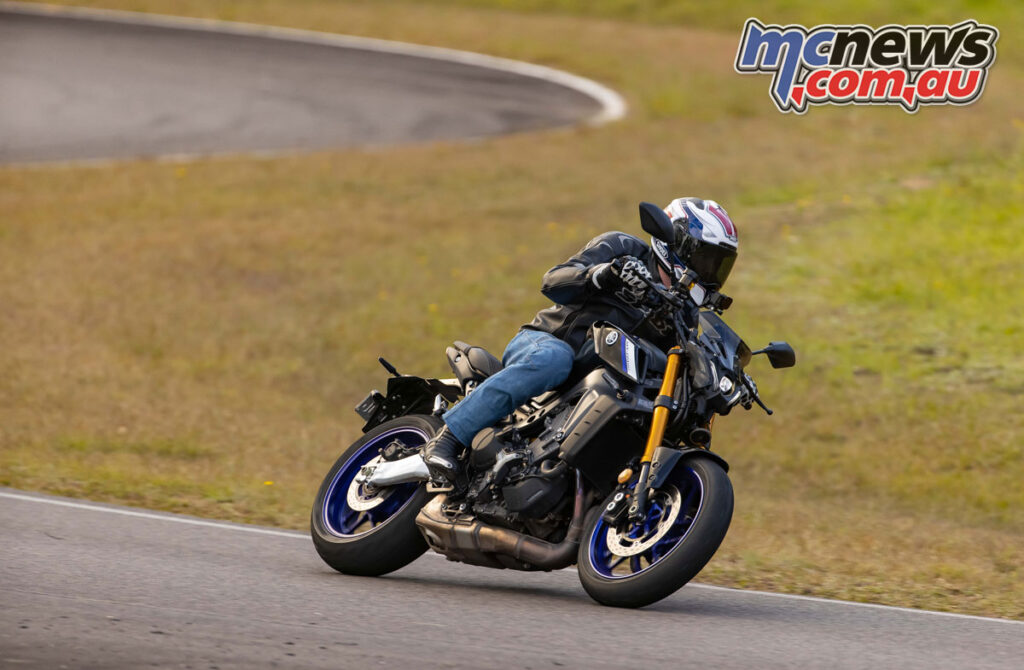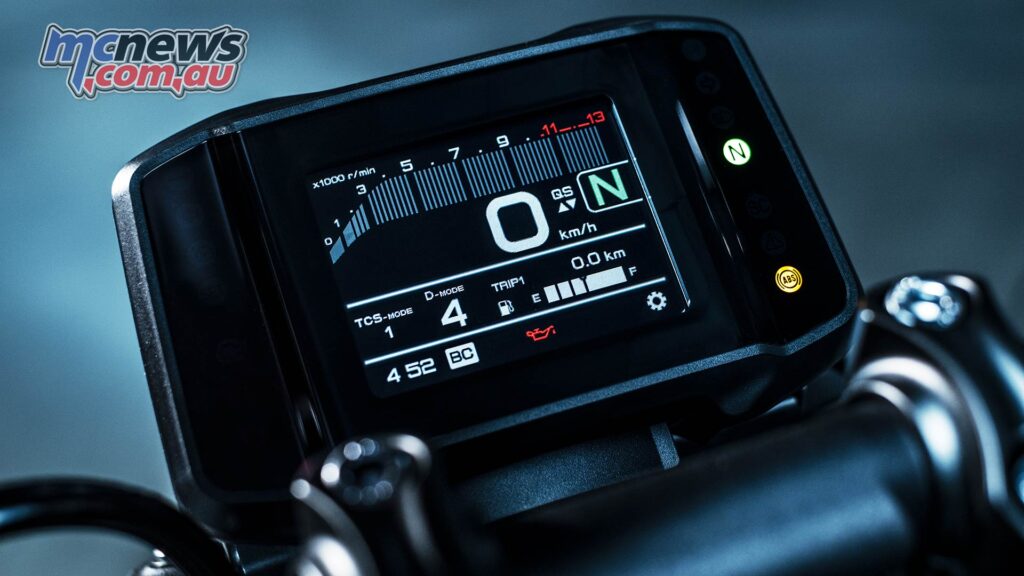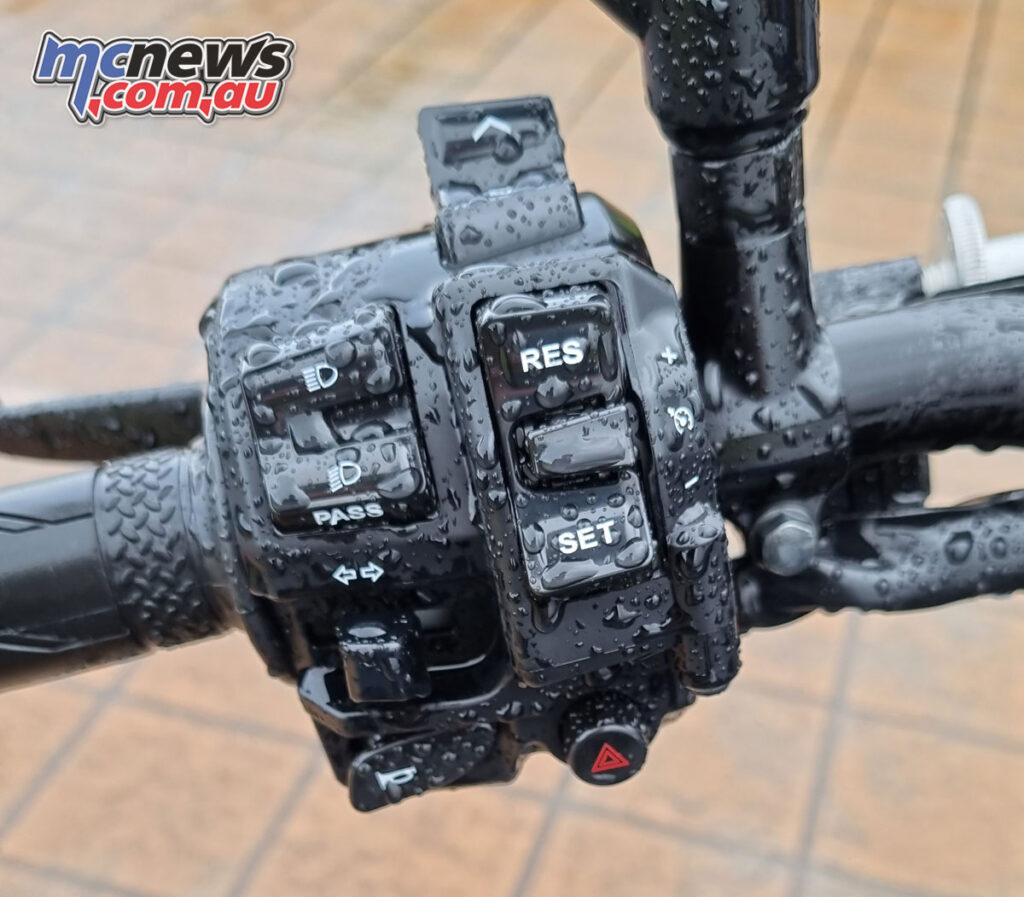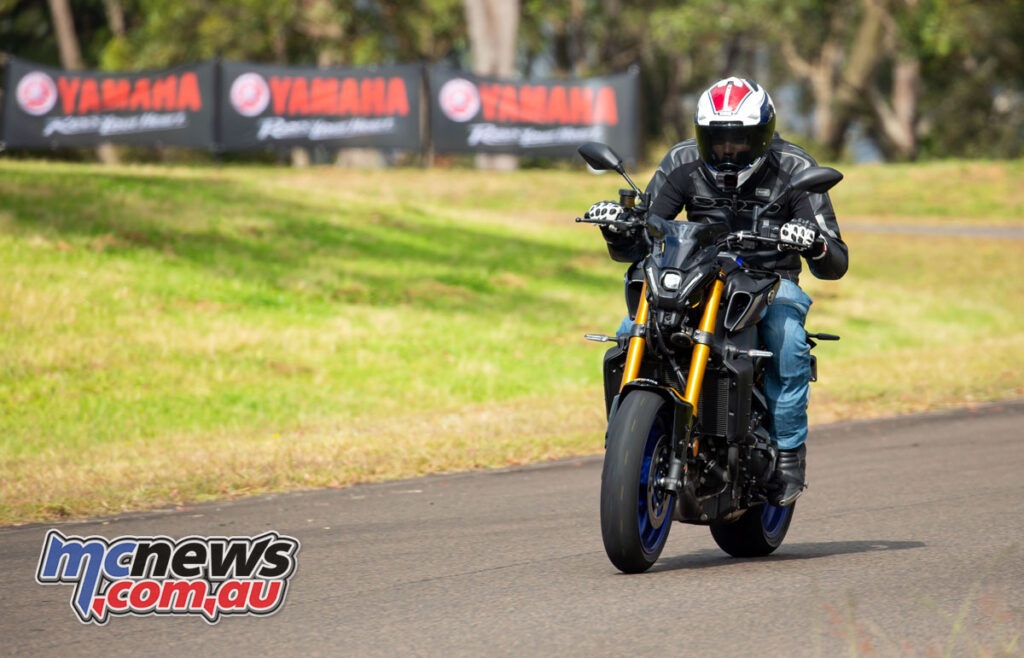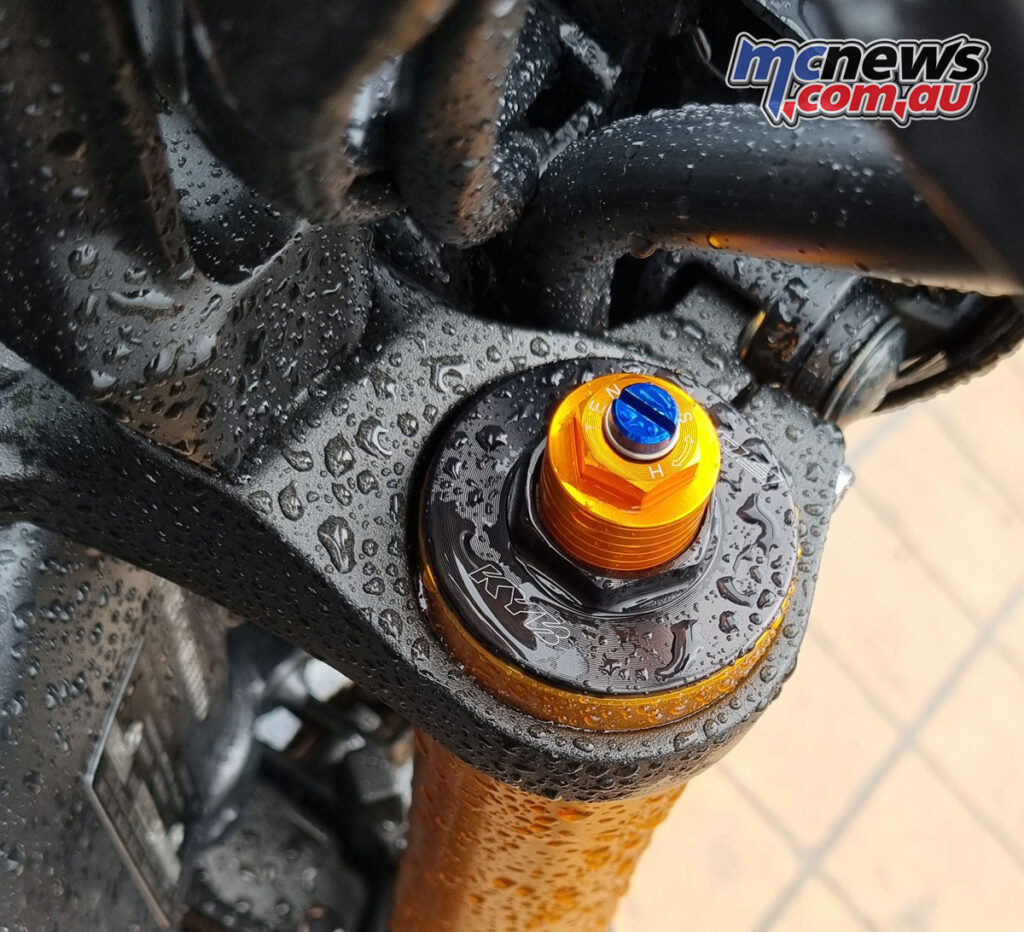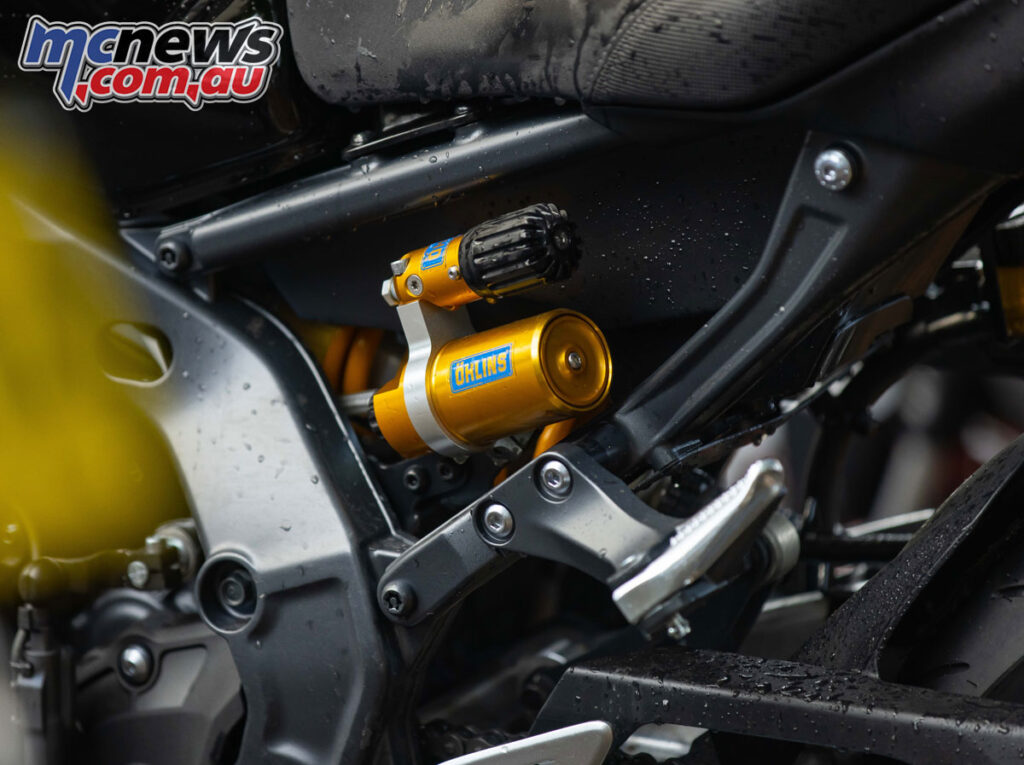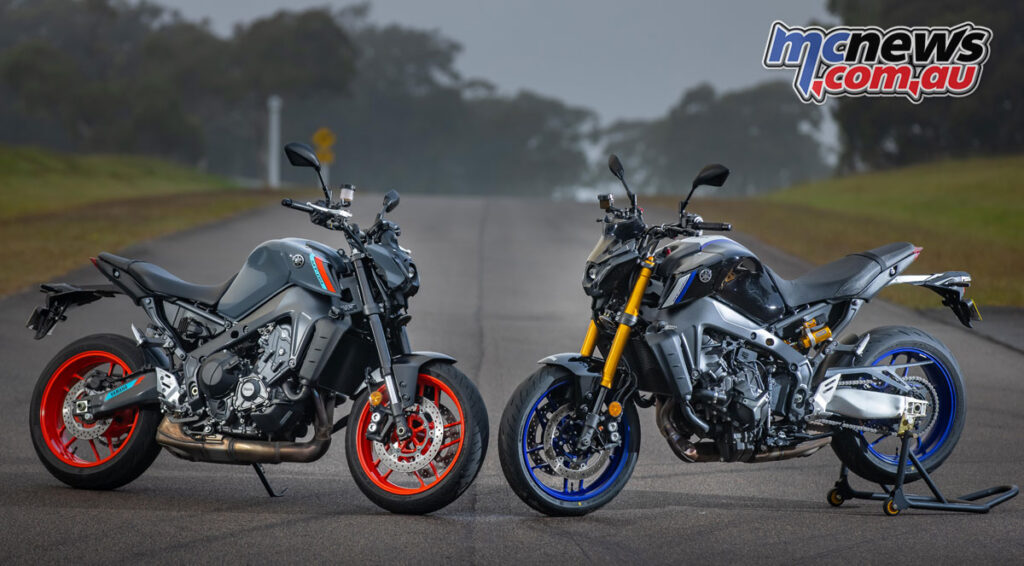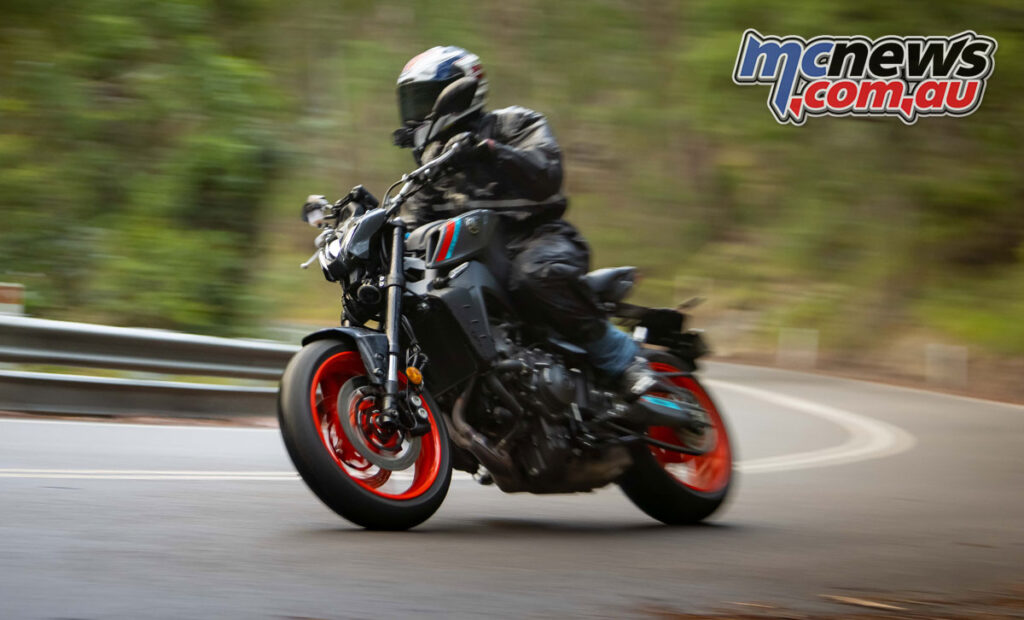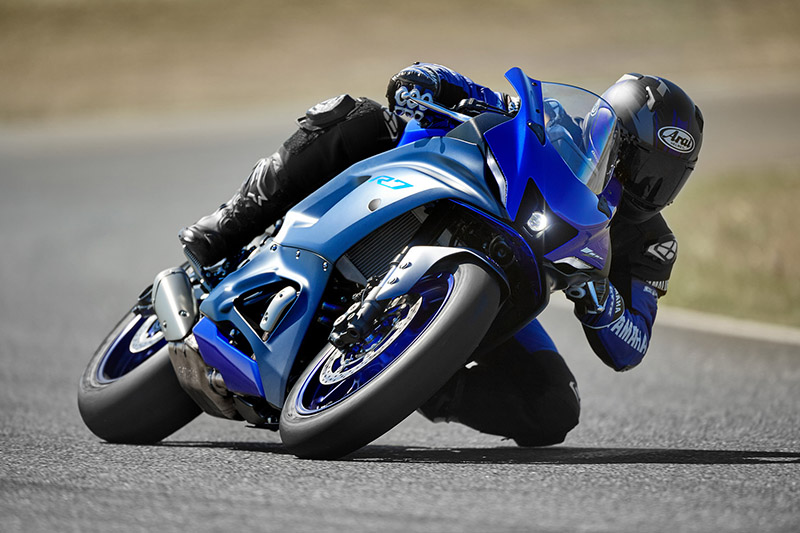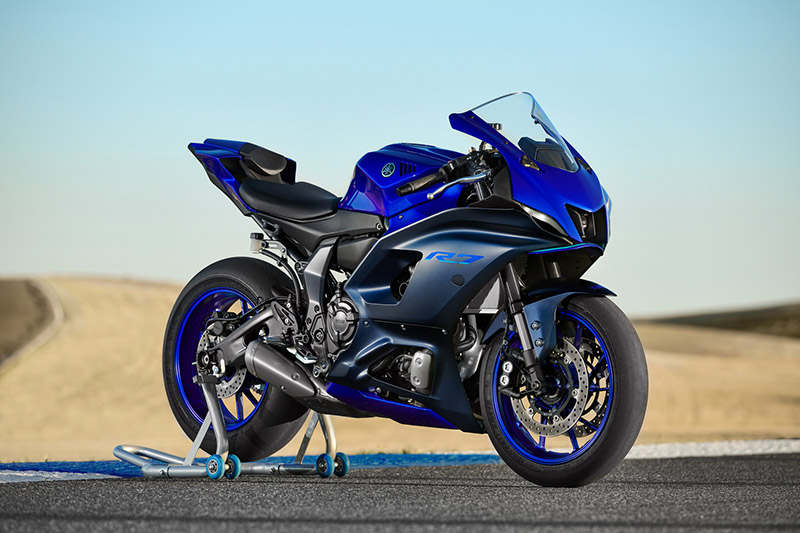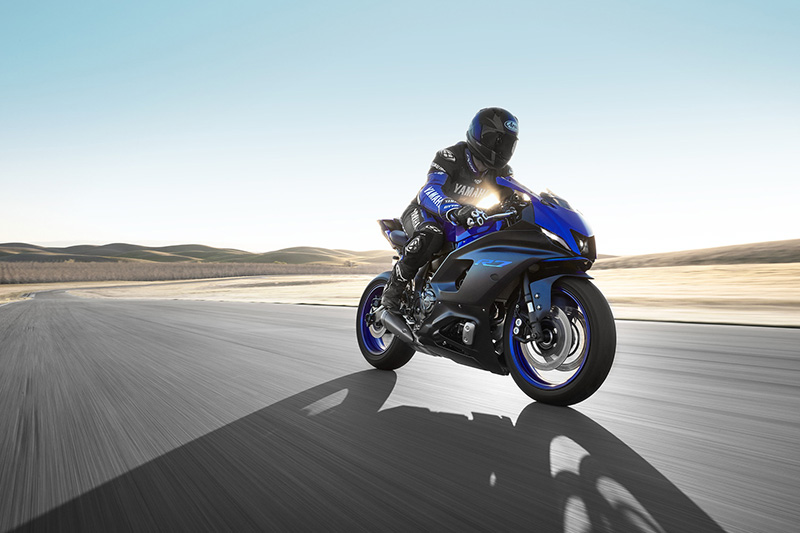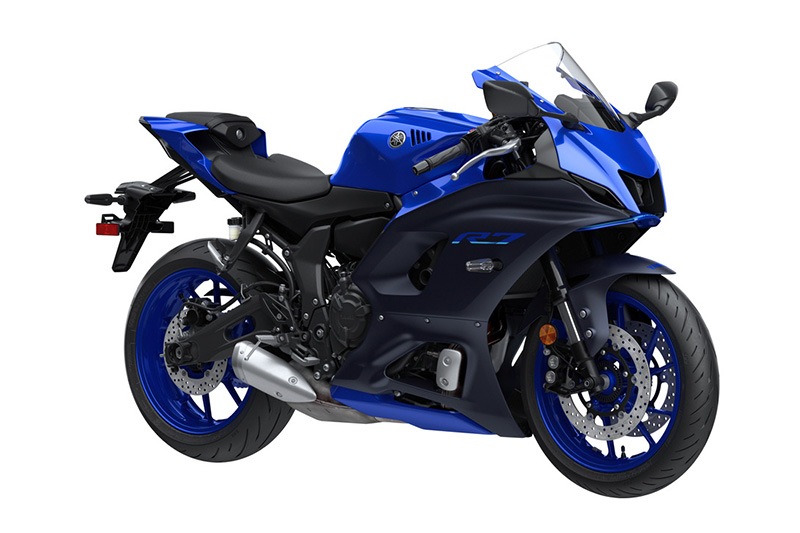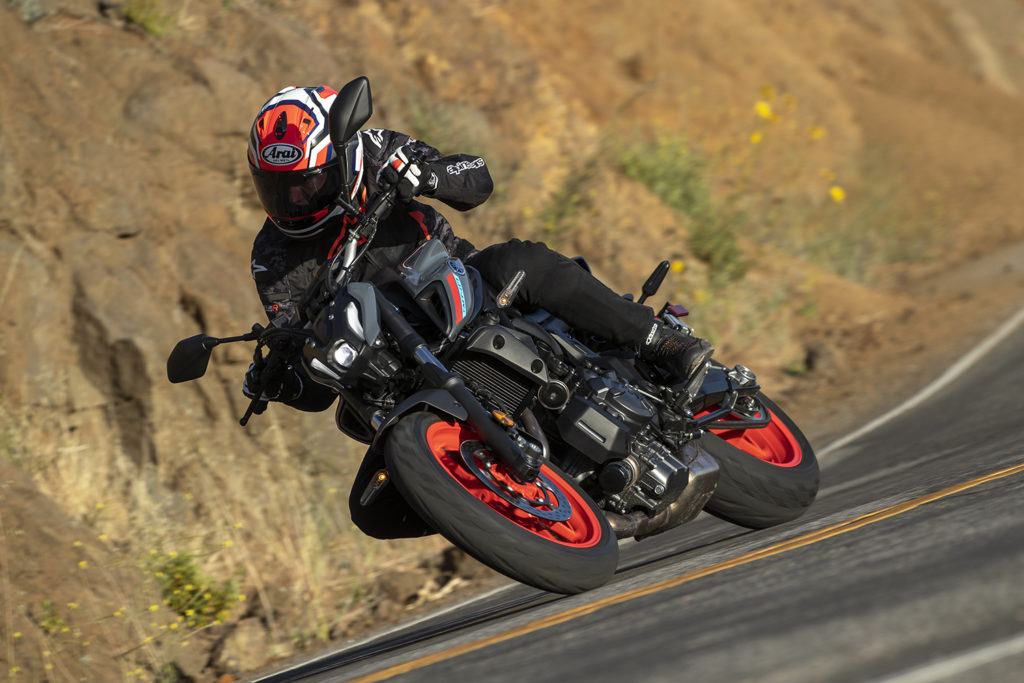
Since its debut in 2015, Yamaha’s MT-07 has been a popular choice thanks to its punchy parallel-twin, aggressive naked styling, and lightweight accessibility. It has proven to be just as adept as a first bike, a commuter, a track bike, a play bike — heck, throw luggage on it and it can be a sport-tourer.
Rider did a comparison test of the Kawasaki Ninja 650, Suzuki SV650, and Yamaha FZ-07 (the MT-07’s original moniker) back in 2016. The three bikes share the same defining attributes — simple, fun, and inexpensive. The FZ-07 came out on top, proving to be edgier and nimbler than its rivals, providing immediate response to throttle inputs and exceptionally agile handling.
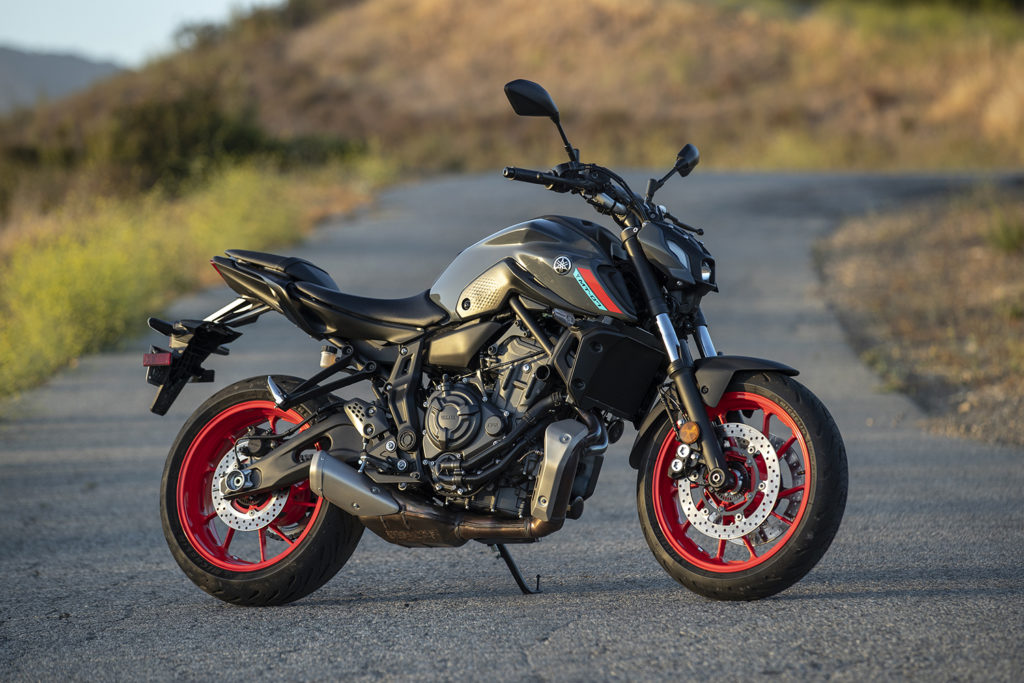
To stay ahead of the competition, Yamaha tweaked the mix, focusing on styling and rider engagement while maintaining the core character at the heart of the model’s appeal. A key part of that appeal has always been its value for money, and in its class, only the Suzuki SV650 can match its price. Perhaps not surprisingly then, most of the updates for the 2021 model are subtle.
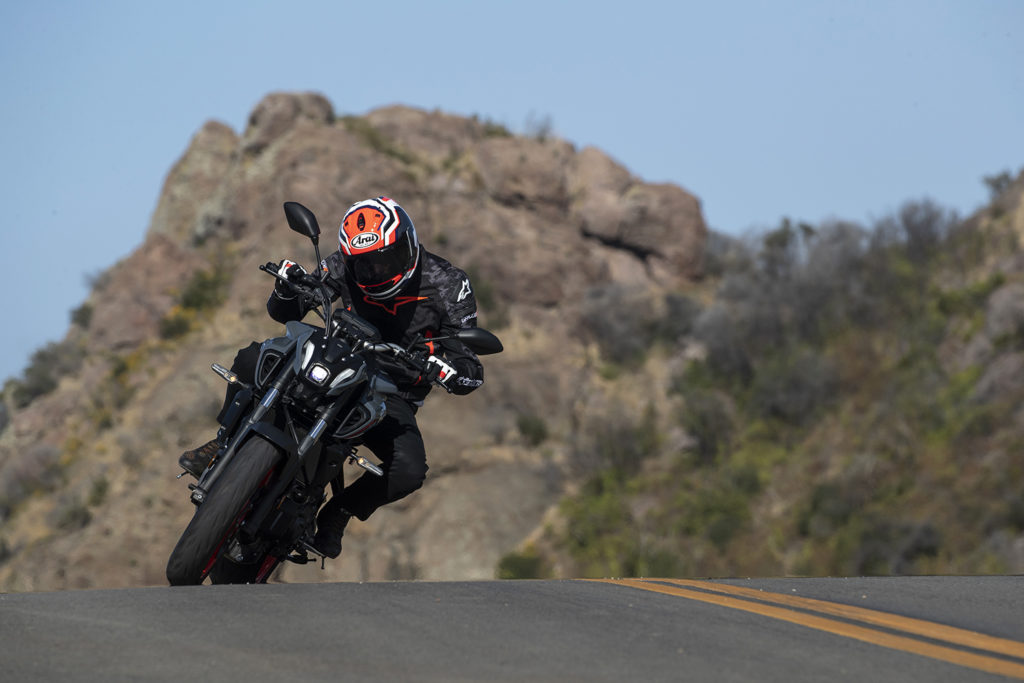
The most striking change is in the new headlight cluster. Yamaha has standardized the styling across the MT range, and just like the MT-09 we tested recently, the MT-07 is fitted with full LED lights arranged in what Yamaha calls a “signature Y-shape icon,” which I found to be insect-like and split the opinion of the Rider staff. The “Y” motif is carried over to the rear LED also. Overall, the MT-07 is a great-looking bike. The stance looks more aggressive than it feels, and the new bodywork provides just enough edge without being silly.
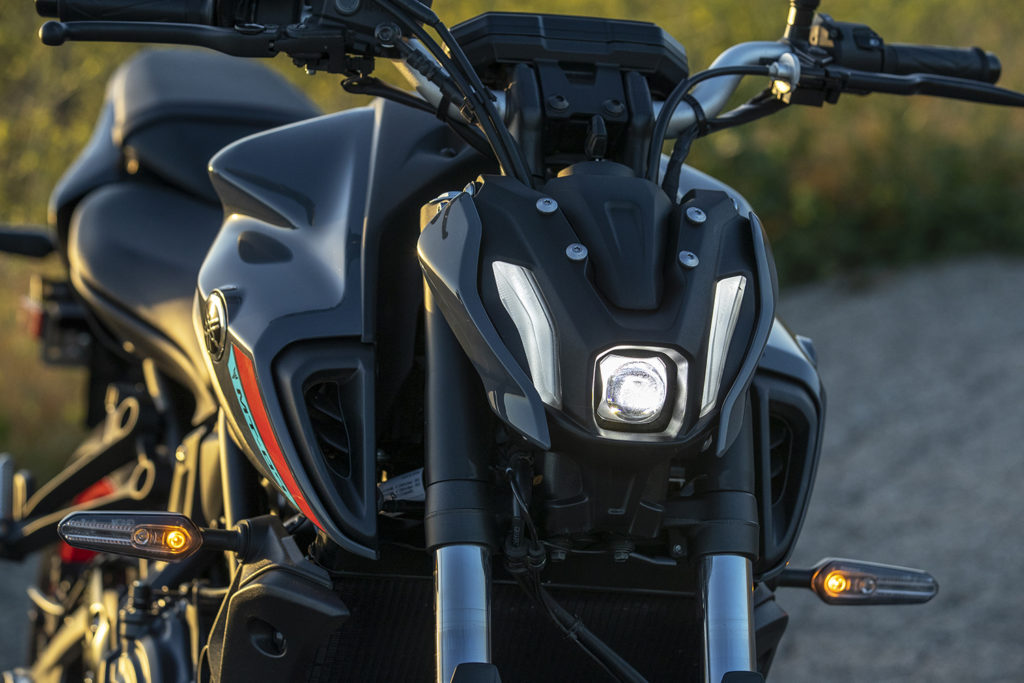
New flared intakes add some muscle to the look, while sleek LED turnsignals bring a touch of class and are a vast improvement over the old lollipop design. Aesthetics aside, the new light cluster is a practical improvement. At night, the low beam provides a good spread of useable light. The high beam is bright and well defined but lacked width when the road became windy. There is no TFT for the new model, but the revised LCD dash is now color inverted. The dark screen with white characters is stylish and easy to read in bright daylight and at night, and Yamaha has fixed the mounting angle issues from previous models.
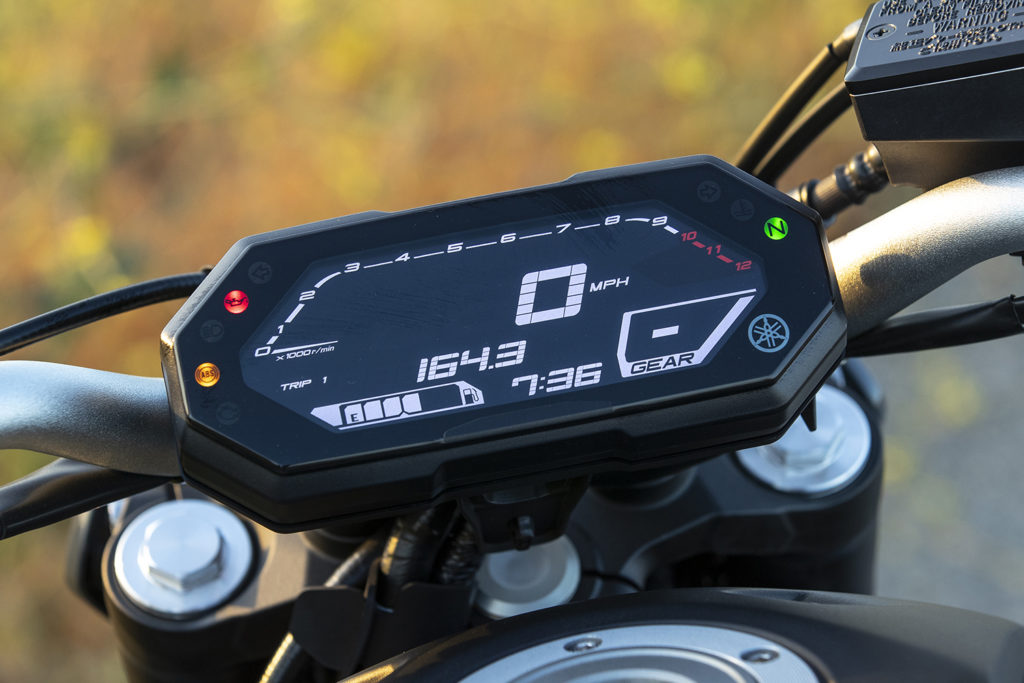
The newly tapered handlebars are over an inch wider and positioned slightly higher than before, which opens up the ergonomics slightly. The wide bars, which work flawlessly at low speeds, felt slightly cumbersome when carving through my favorite canyon. The new setup takes nothing away from the MT-07’s exceptional agility and responsiveness, allowing for precisely picked lines through corners and a tight turning radius. The low seat height and curb weight, which at 31.7 inches and just over 400 pounds respectively, are among the lowest in class, make for a thoroughly approachable motorcycle, especially for shorter riders.
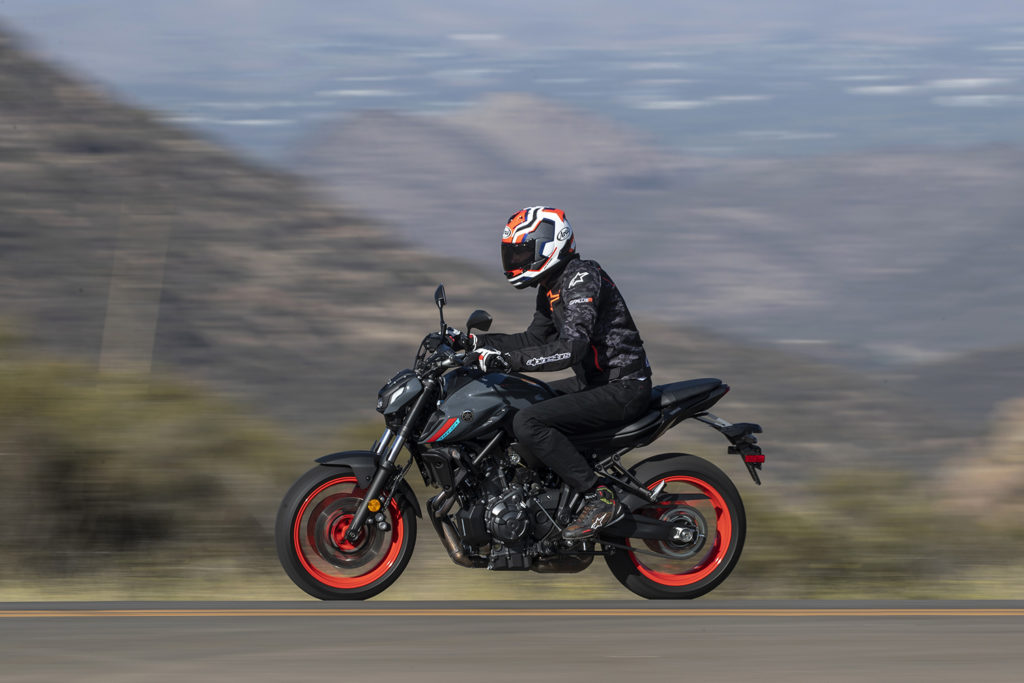
There is a narrow stretch of winding road not far from my home that is so good that I often stop and re-ride it a few times. On the MT-07 it was a blast, and I was impressed with how easy it was to get a U-turn done. My brother, who lives in the U.K., is taking his motorcycle test on a restricted MT-07. It’s a favorite with schools offering the A2 test, and no doubt its low-speed maneuverability and forgiving nature are key factors behind that.
I’m 6 feet, 2 inches tall, and when I took our MT-07 for a full day’s ride, spending a solid eight hours in the saddle, I found it had a comfortable and commanding riding position, with room to slide back on the seat just a little and get into a more aggressive attitude in the twisties. The pegs are high enough to make it a plausible carver but require considerable knee bend for taller riders like me, which felt cramped after a while. Nonetheless, I wouldn’t change much. The pegs give enough clearance to really take advantage of the strong performance offered by that punchy twin.
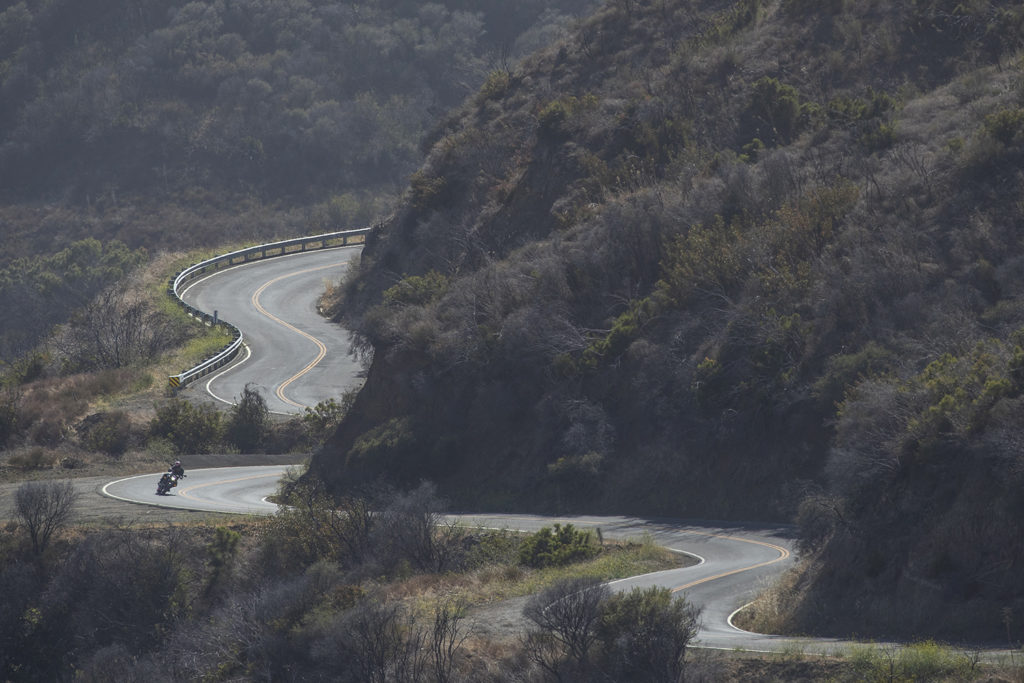
The MT’s 689cc parallel-twin has been tweaked to be Euro 5 compliant without compromising performance. We took it down to Jett Tuning for dyno testing, and output remains similar to the outgoing model: 68 horsepower and 46.5 lb-ft of torque at the rear wheel. Part of what makes the MT-07 so much fun is its bias towards maximizing instantaneous torque. The motor provides all the thrill the combustion forces working below can exert but with none of the hairiness. Throttle response is strong without being too snappy. A new air-intake duct ensures smooth fueling and acceleration when rolling on and off the power, and the engine’s 270-degree firing cadence generates a nice strum when you get the revs over 5,000. It also has a little bit of crackle and pop as you come off the gas, always a crowd pleaser.
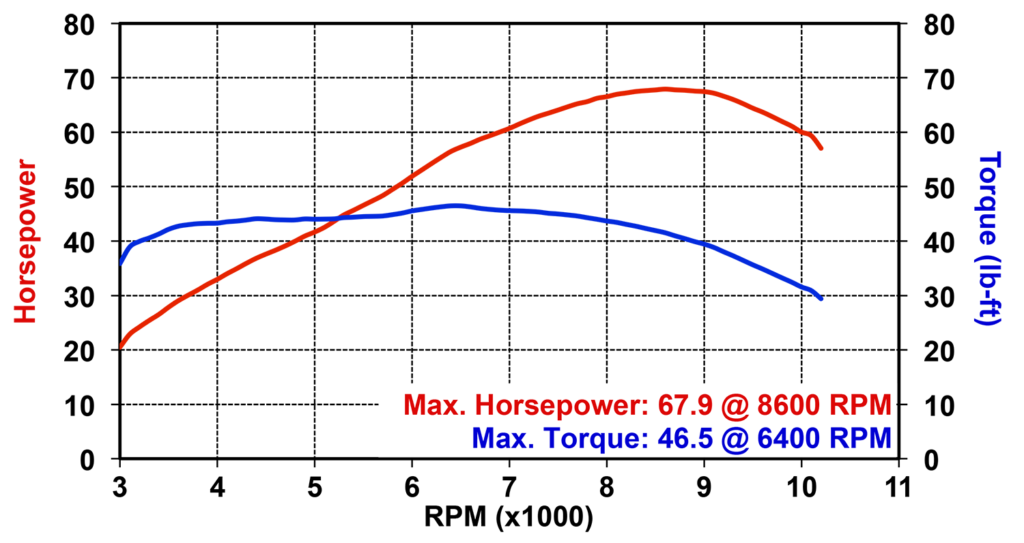
Riding the MT-07 up my favorite canyon, 25 glorious miles, few of which are straight, gave me an opportunity to get the new Michelin Road 5 tires warmed up and carry some speed into the corners. The characteristics of these tires suit the bike well. Designed as an all-rounder, the Road 5 has four-season credentials in its center tread, where deep grooves dissipate water, but at the tire’s shoulder, only called into use when riding spiritedly in the dry, a softer compound of sticky rubber without tread sipes provides additional grip.
In this environment, the MT-07’s twin is happiest in the 5,000-7,000 rpm range, optimizing throttle response and engine braking. Thanks to the short wheelbase and low weight, flicking it from side to side is effortless, and the handling intuitive. After only a few miles it felt like I’d been riding this thing for years and I found myself in that wonderful riding zone, where your inputs are entirely in tune with the motorcycle and the feedback you get through the bars, pegs, and seat is clear and predictable. All that remains is the asphalt, the braking points, the exits, and the exhilarating forces working through your body, now a part of the bike. I didn’t want to stop, fearing even a brief pause might break the magic.
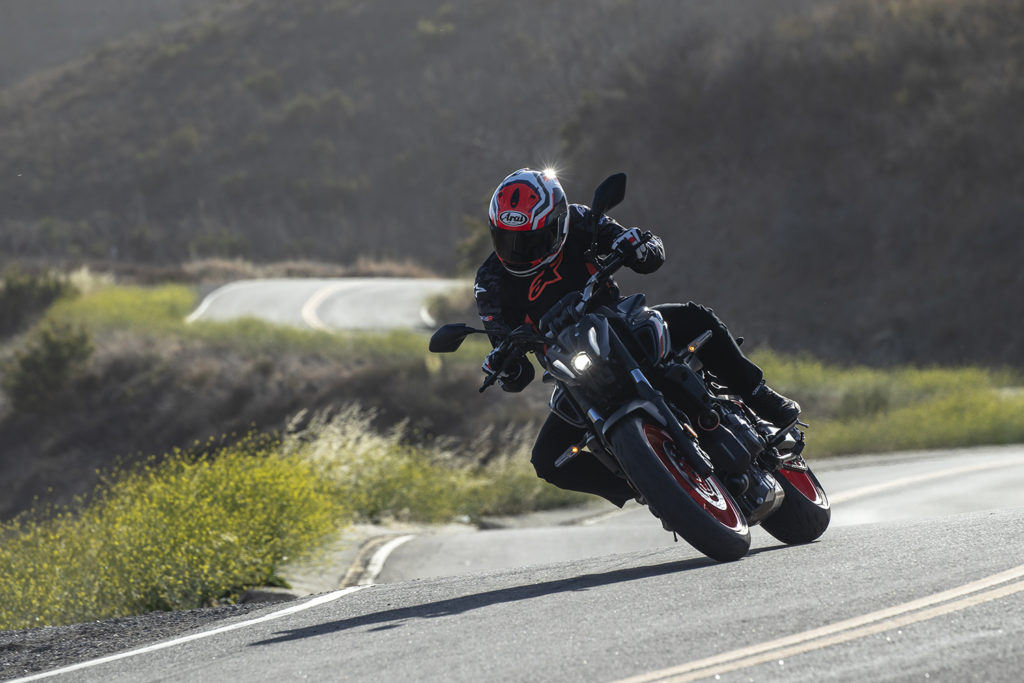
One of the key reasons behind the MT-07’s popularity as an all-rounder is its ability to be just as forgiving to new riders as it is thrilling for riders with years of experience. The gearbox is somewhat notchy and requires more effort than some of its class rivals, but the clutch has a wide take-up zone and takes all the sweat out of pulling away from stops. The strong low-end torque even allows you to pull off in 2nd gear without embarrassing yourself with a stall.
ABS is standard and Yamaha has made the front brake discs 14mm larger, which provided adequate stopping power but with a softer lever than premium brakes. The 41mm nonadjustable KYB fork remains unchanged, and the rear monoshock is adjustable for preload and rebound. The MT-07 was fighting above its weight when I took my wife on a pillion ride through the canyons. Handling and braking were up to the task, but the narrow rear seat and lack of grab rails ensure this will not be the first choice for riders looking for a good two-up bike.
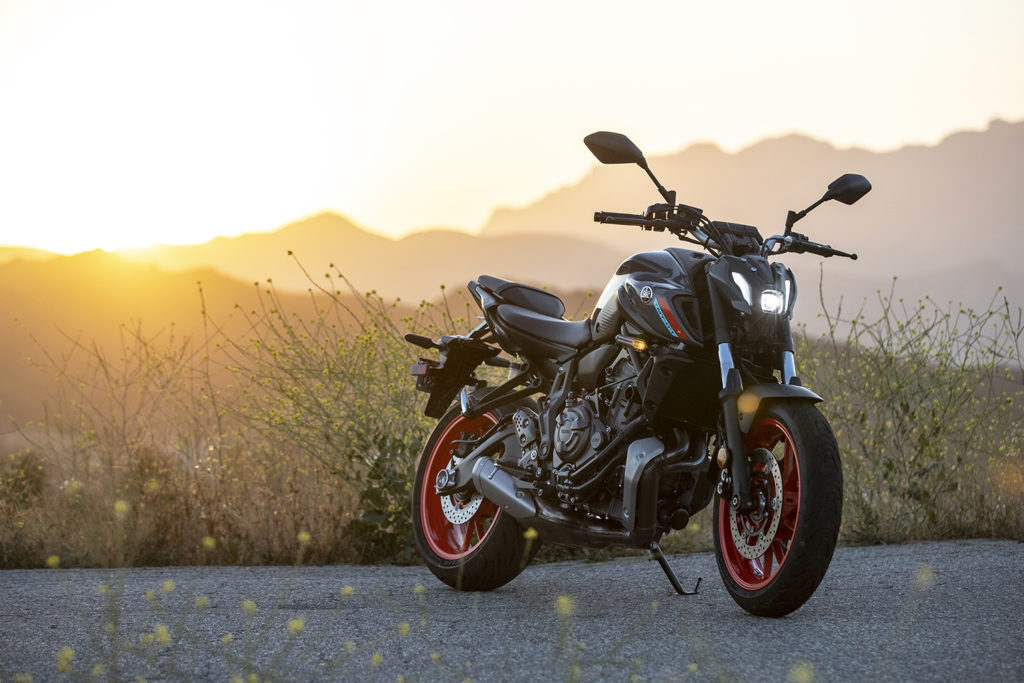
The MT-07’s past success has been dependent upon its nearly universal accessibility. The magic lies in maintaining these aspects while still being exciting, practical, comfortable, and visually appealing. Riders familiar with the older models will not be disappointed. Nothing has been compromised where it matters. The updated styling represents a bold modern design and visually sets it apart from its rivals.
What hasn’t changed is the MT-07’s ability to repeatedly take you back to that feeling you had the very first time you stepped off a bike with pedals and pulled away on a bike with pegs, when exertion was replaced with effortless thrust. It makes me grin just thinking about it. The MT-07 remains an excellent value while still offering riders of all skills, sizes, and needs the most important thing of all — pure, unadulterated fun.
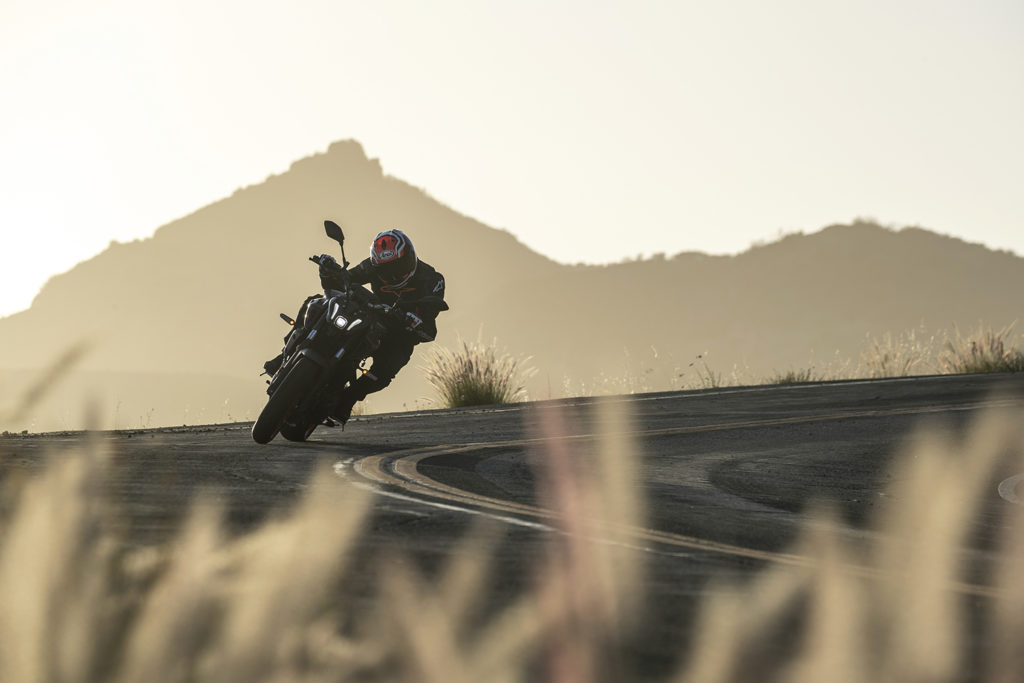
2021 Yamaha MT-07 Specs
Base Price: $7,699
Warranty: 1 yr., unltd. miles
Website: yamahamotorsports.com
Engine
Type: Liquid-cooled, transverse parallel-twin, DOHC w/ 4 valves per cyl.
Displacement: 689cc
Bore x Stroke: 80.0 x 68.6mm
Compression Ratio: 11.5:1
Valve Insp. Interval: 26,000 miles
Fuel Delivery: DFI w/ 38mm throttle bodies x 2
Lubrication System: Wet sump, 2.75 qt. cap.
Transmission: 6-speed, cable-actuated wet clutch
Final Drive: O-ring chain
Chassis
Frame: Tubular-steel perimeter w/ engine as stressed member, steel swingarm
Wheelbase: 55.1 in.
Rake/Trail: 24.5 degrees/3.5 in.
Seat Height: 31.7 in.
Suspension, Front: 41mm stanchions, no adj., 5.1 in. travel
Rear: Single link-type shock, adj. preload and rebound, 5.1 in. travel
Brakes, Front: Dual 298mm discs w/ opposed 4-piston calipers & ABS
Rear: Single 245mm hydraulic disc w/ 1-piston caliper & ABS
Wheels, Front: Cast aluminum, 3.50 x 17 in.
Rear: Cast aluminum, 5.50 x 17 in.
Tires, Front: 120/70-ZR17
Rear: 180/55-ZR17
Wet Weight: 406 lbs.
Load Capacity: 377 lbs.
GVWR: 783 lbs.
Performance
Horsepower: 67.9 hp @ 8,600 rpm (rear-wheel dyno)
Torque: 46.5 lb-ft @ 6,400 rpm (rear-wheel dyno)
Fuel Capacity: 3.7 gals.
Fuel Consumption: 45 mpg
Estimated Range: 165 miles
The post 2021 Yamaha MT-07 | Road Test Review first appeared on Rider Magazine.
Source: RiderMagazine.com

